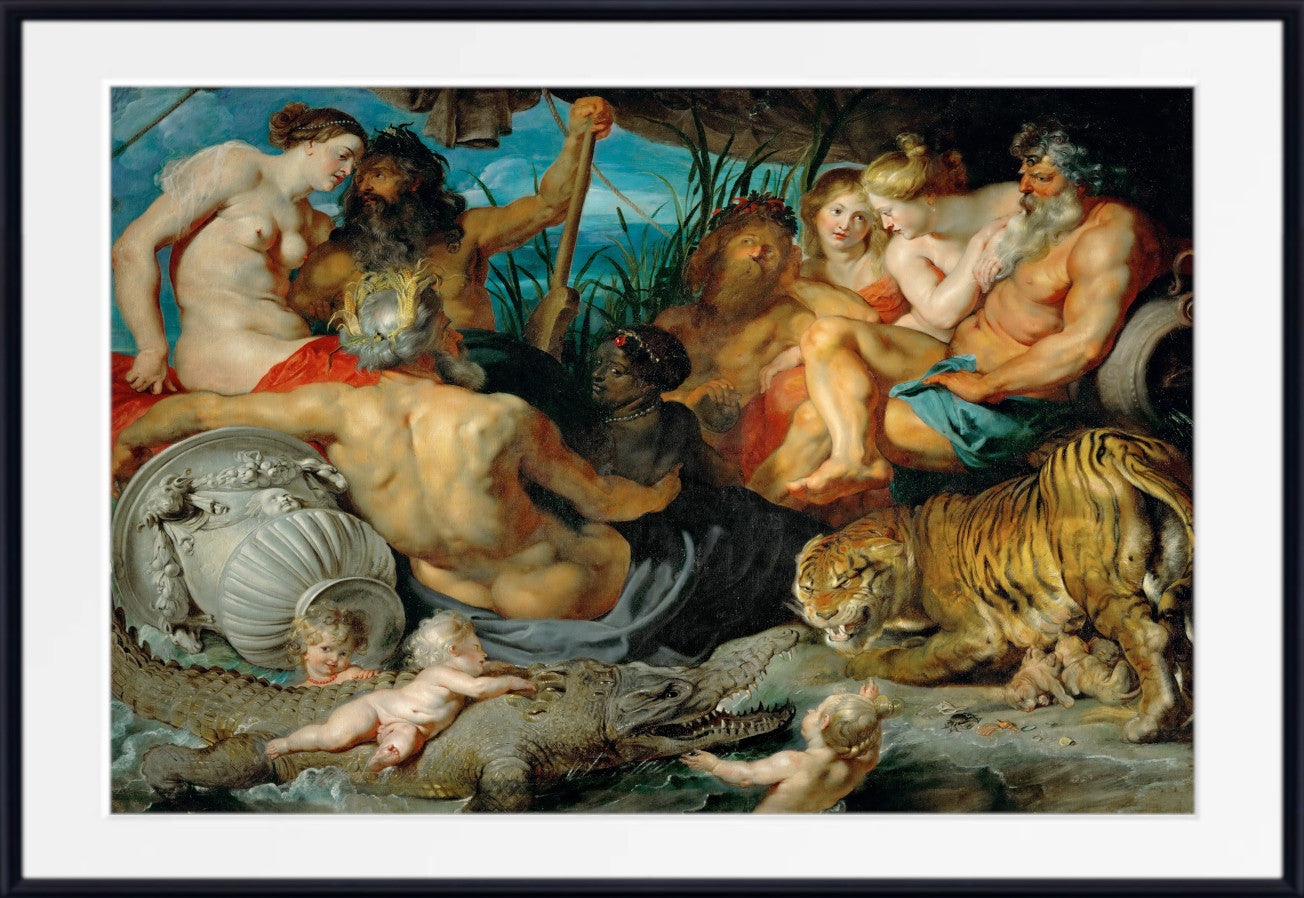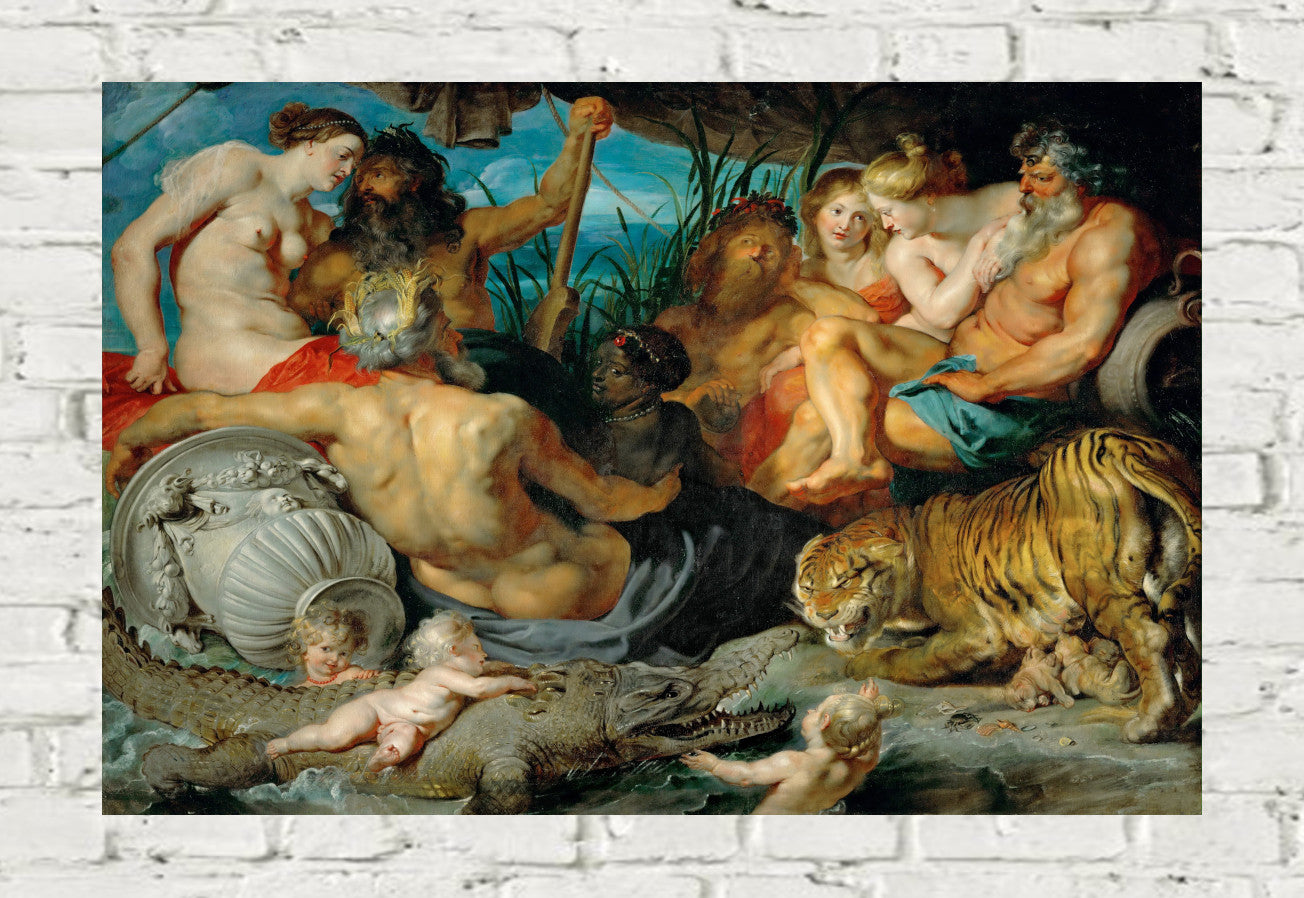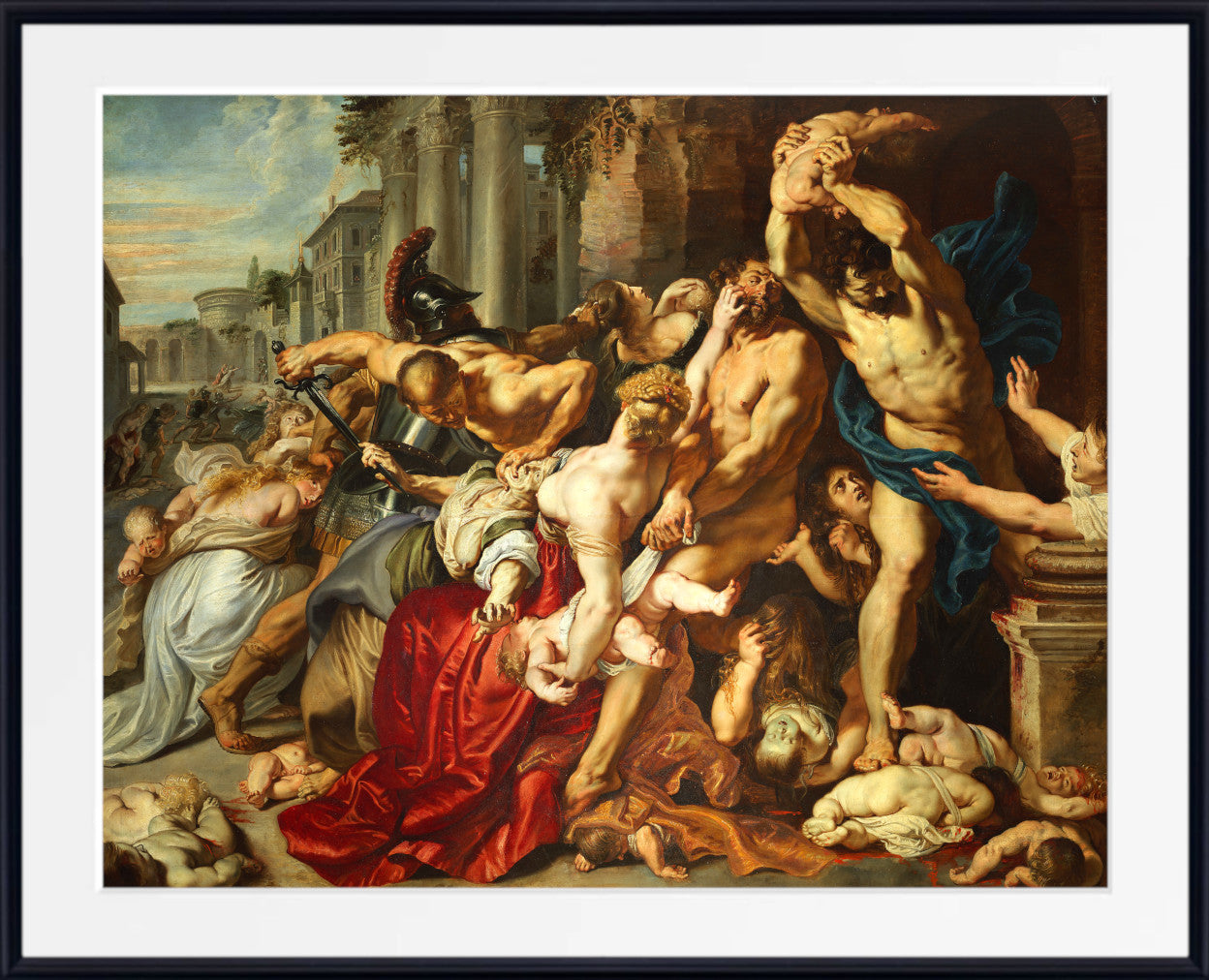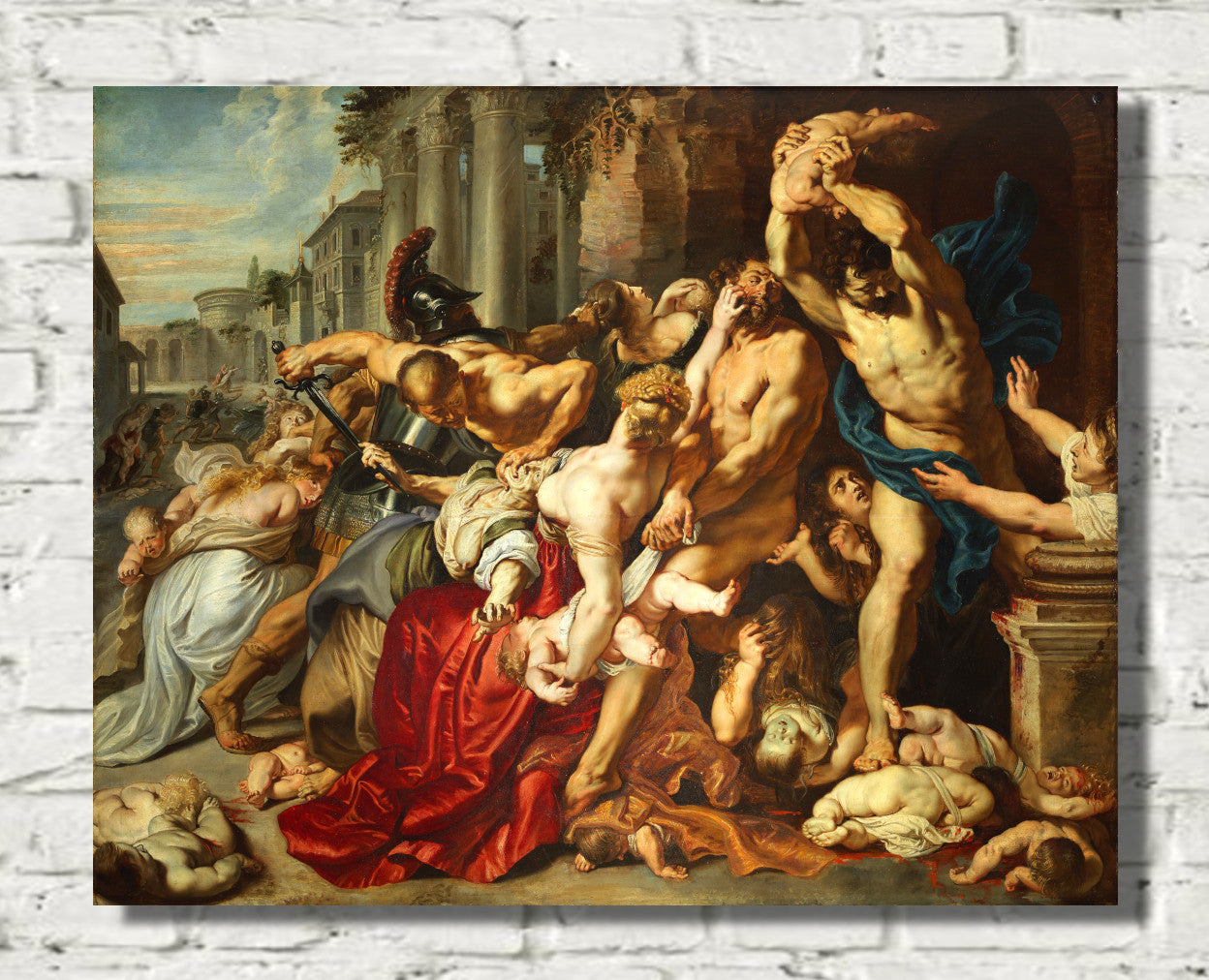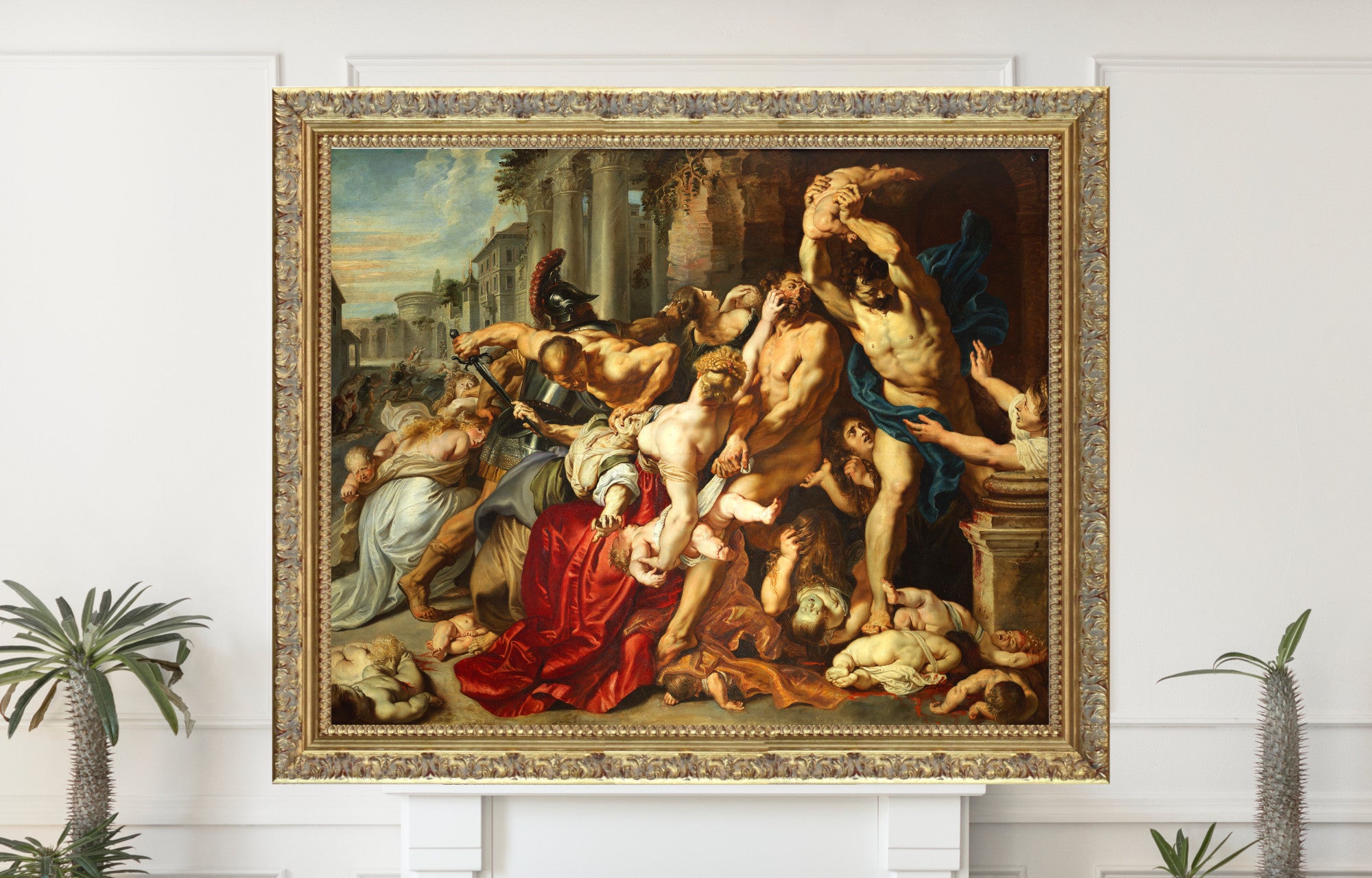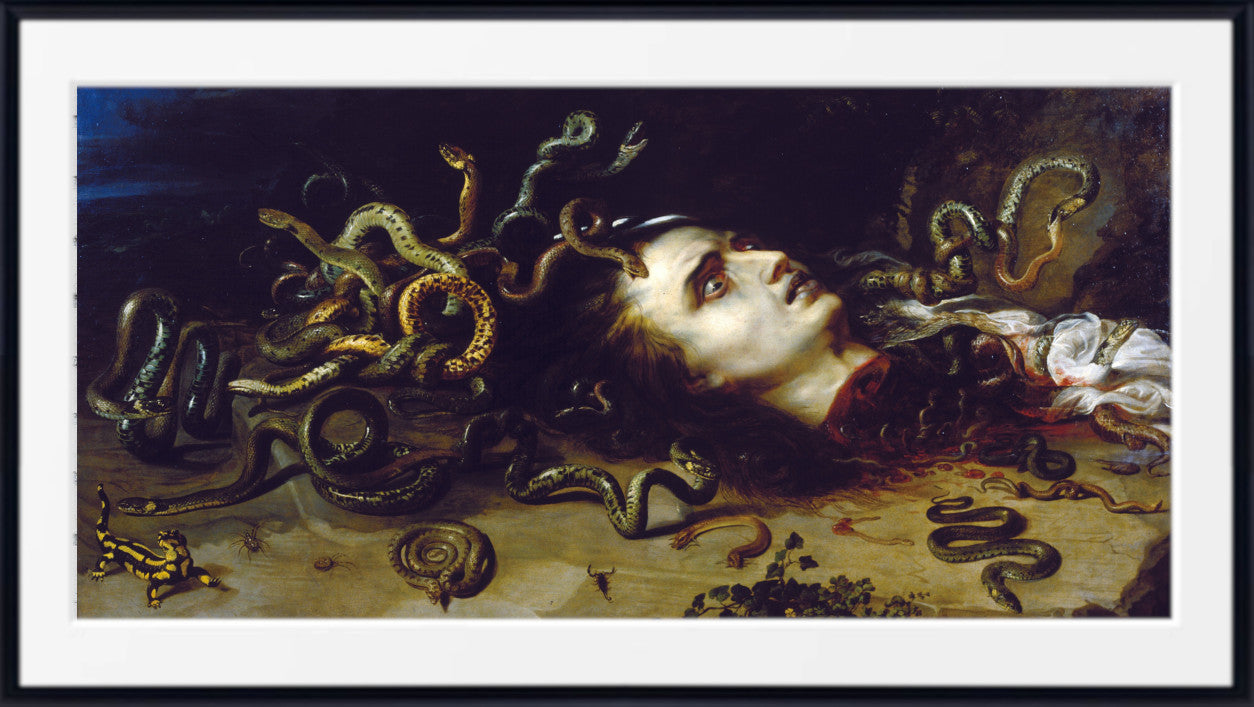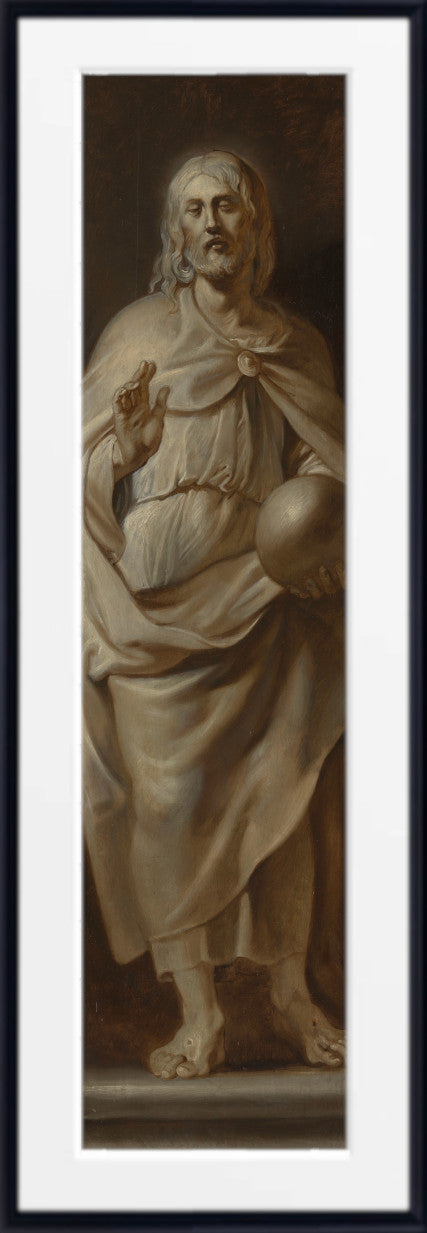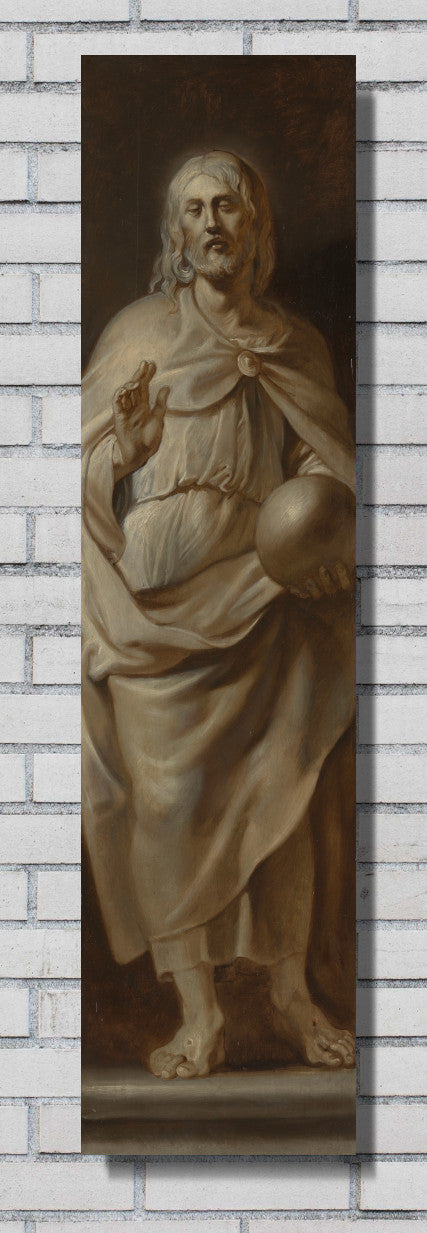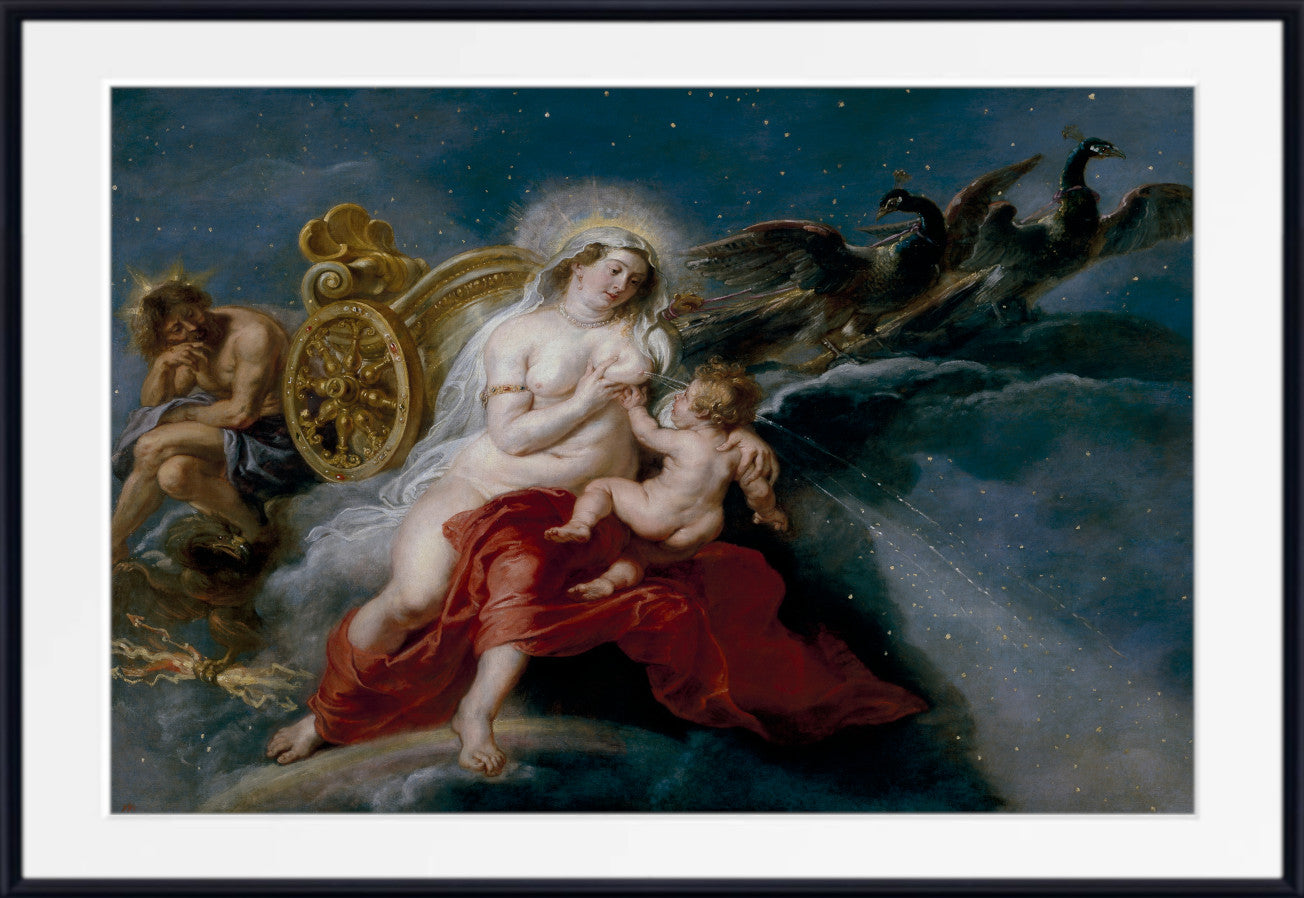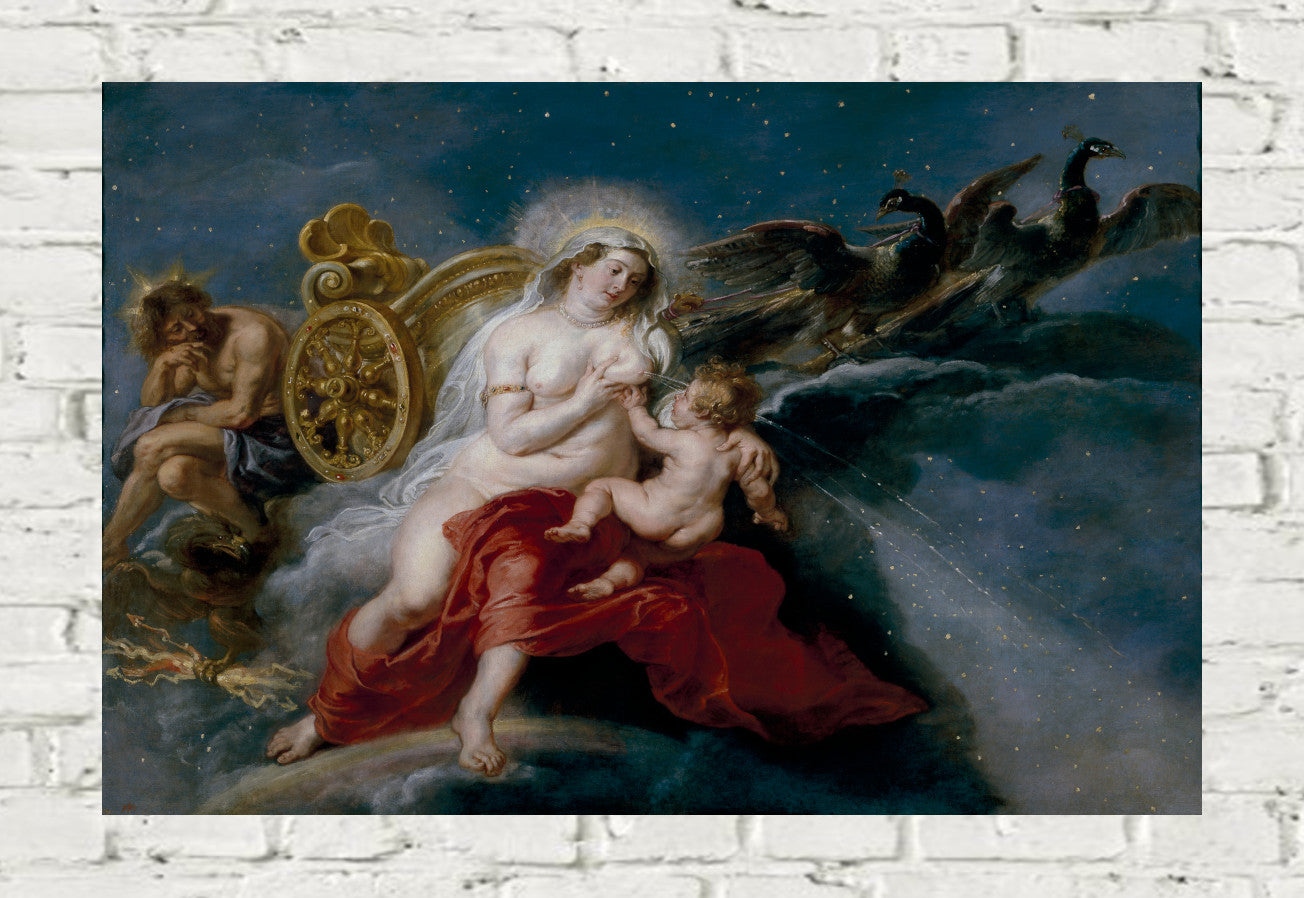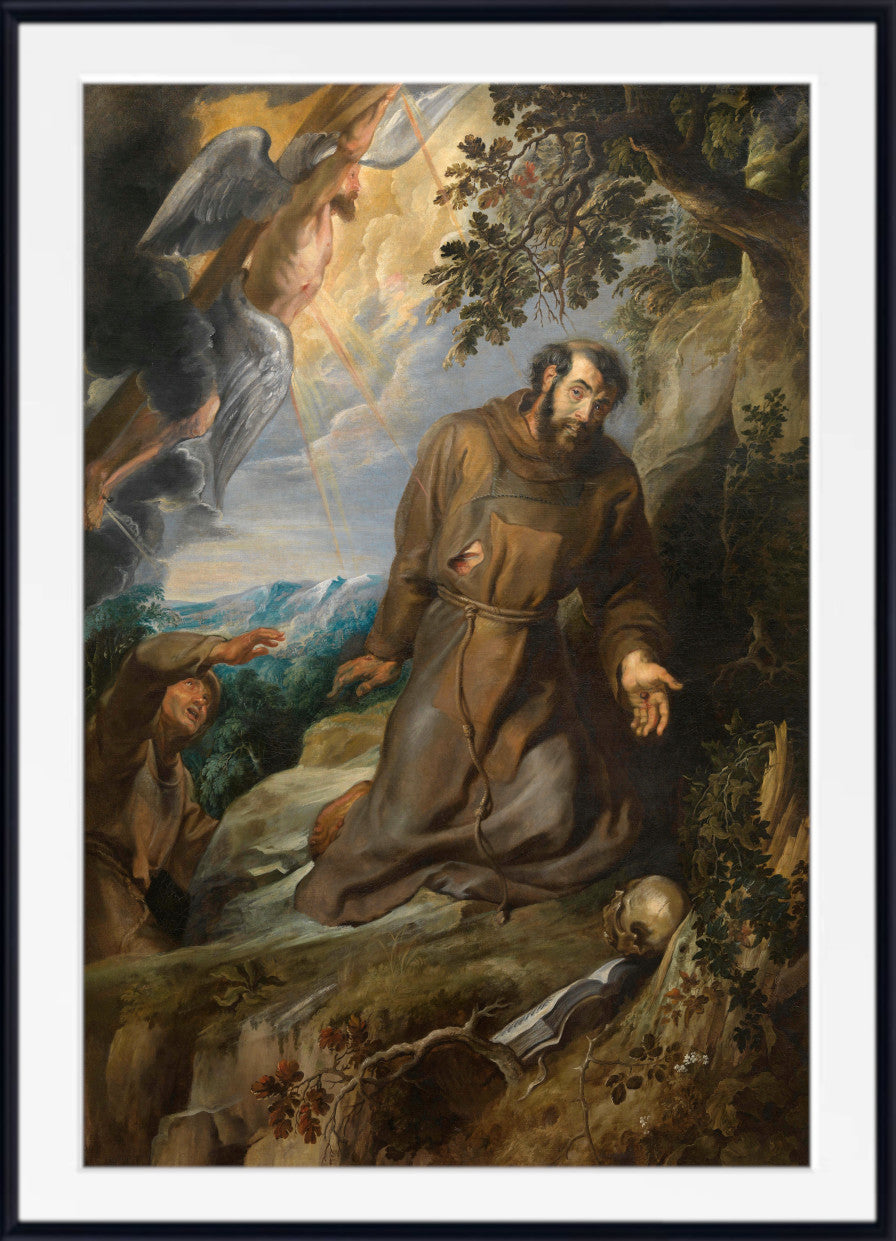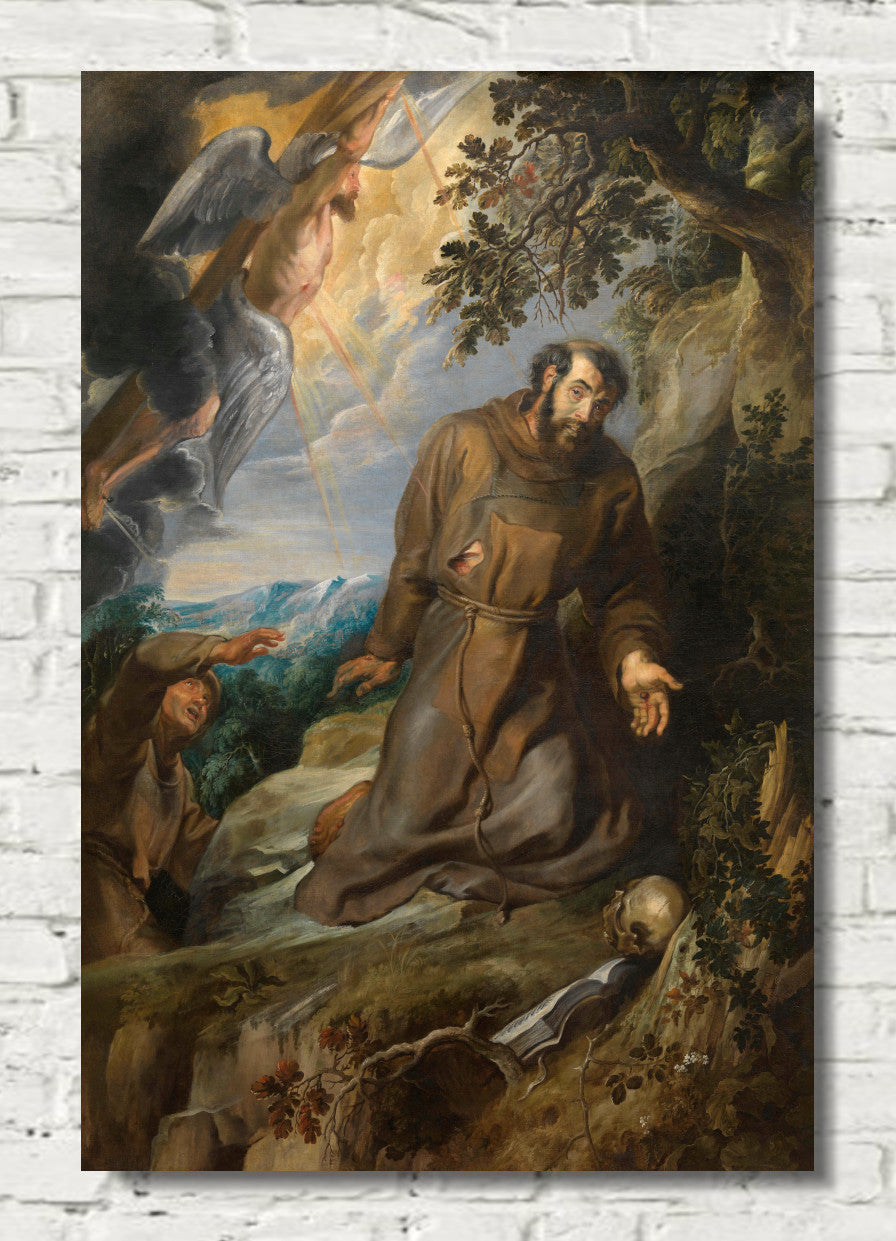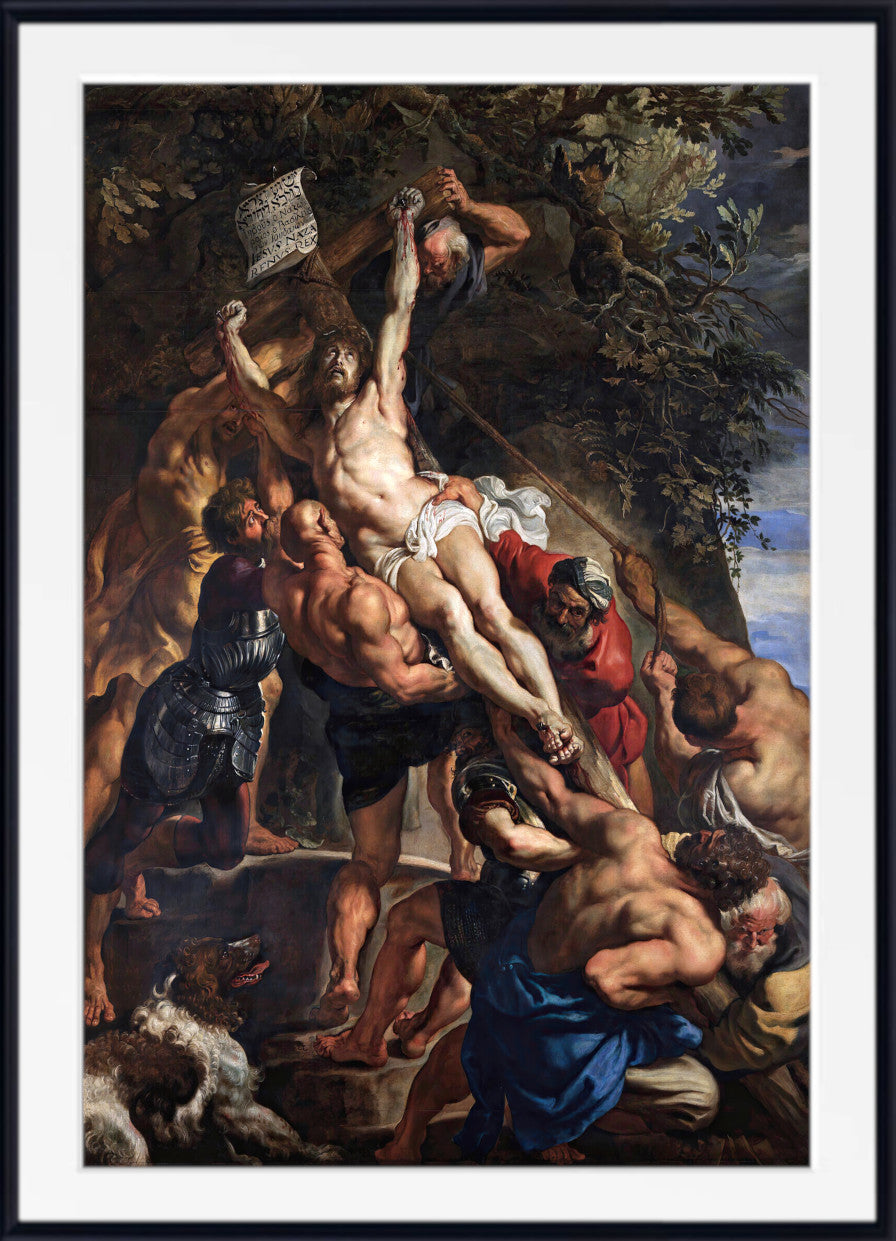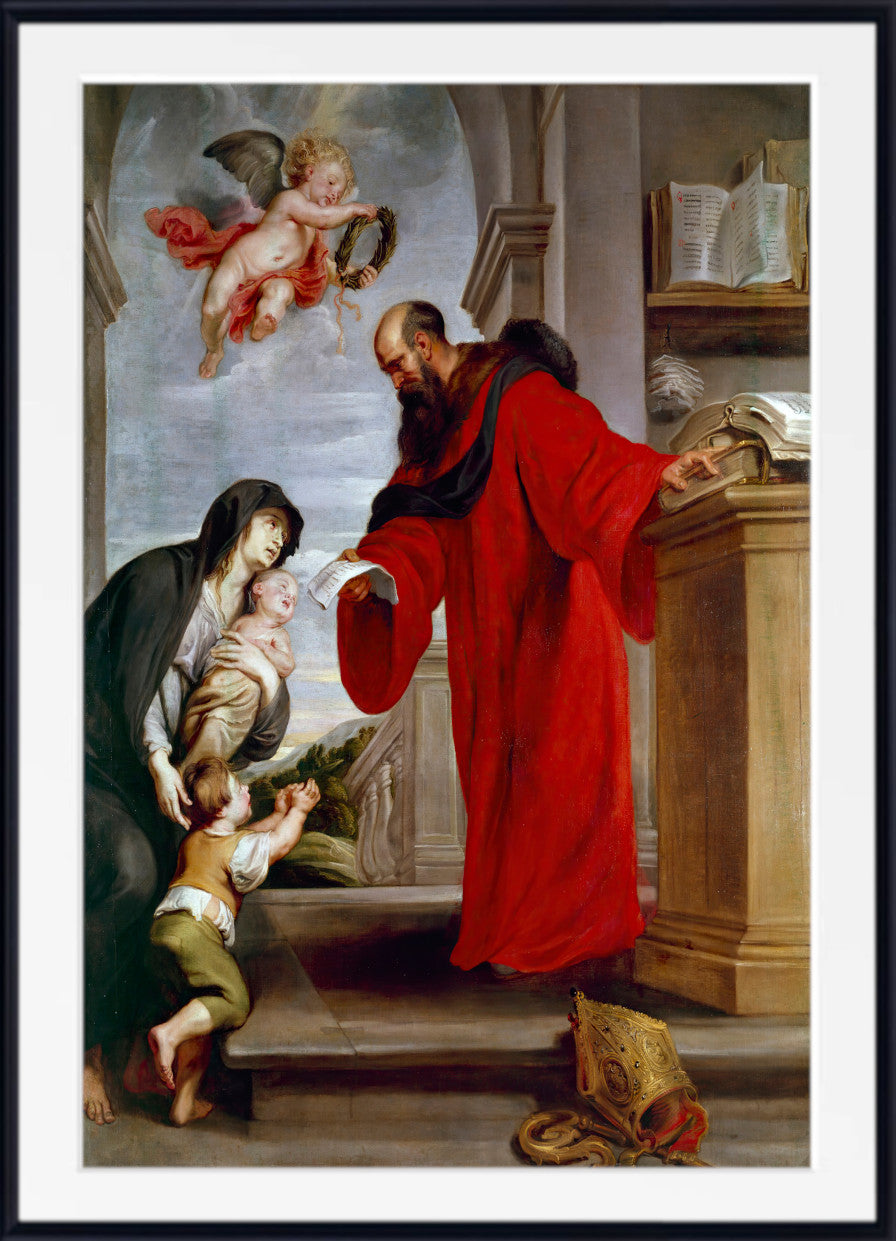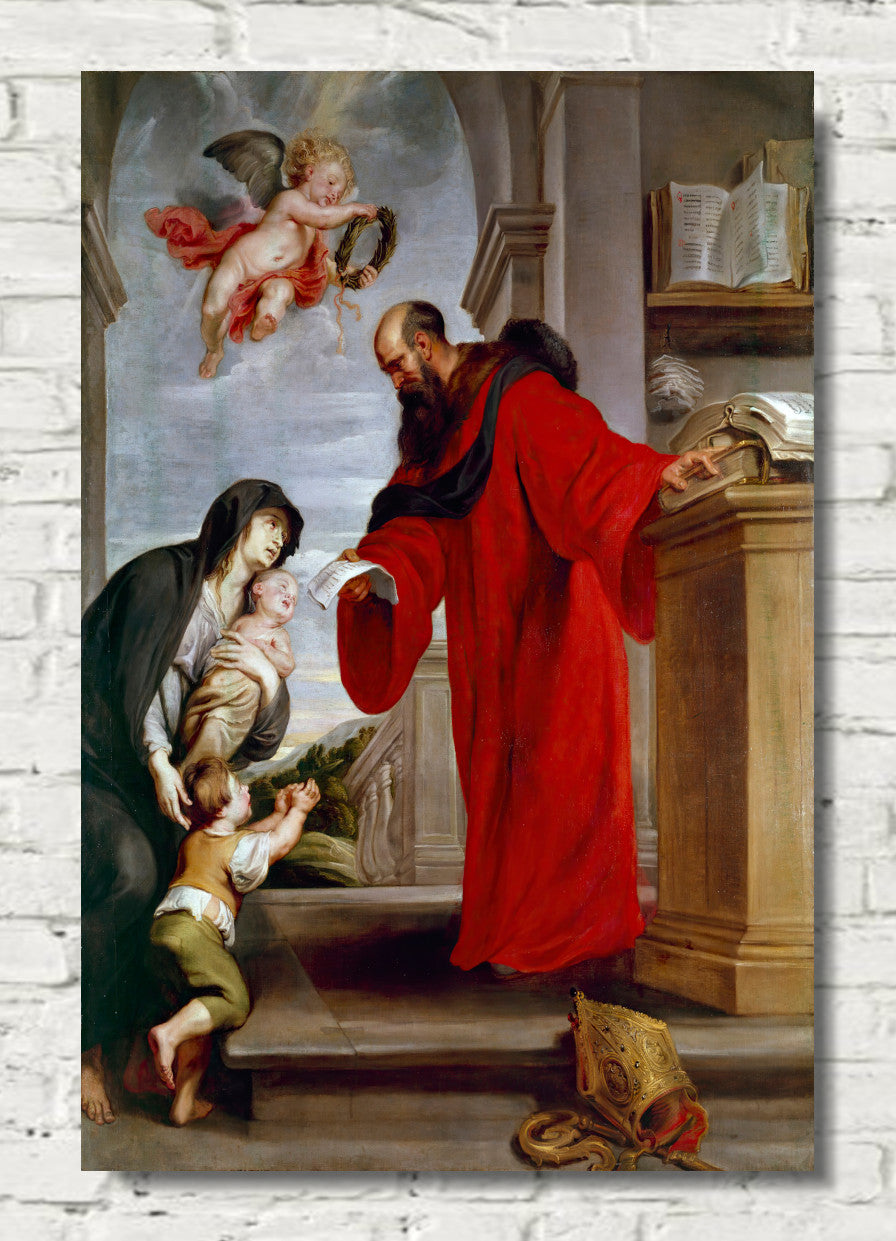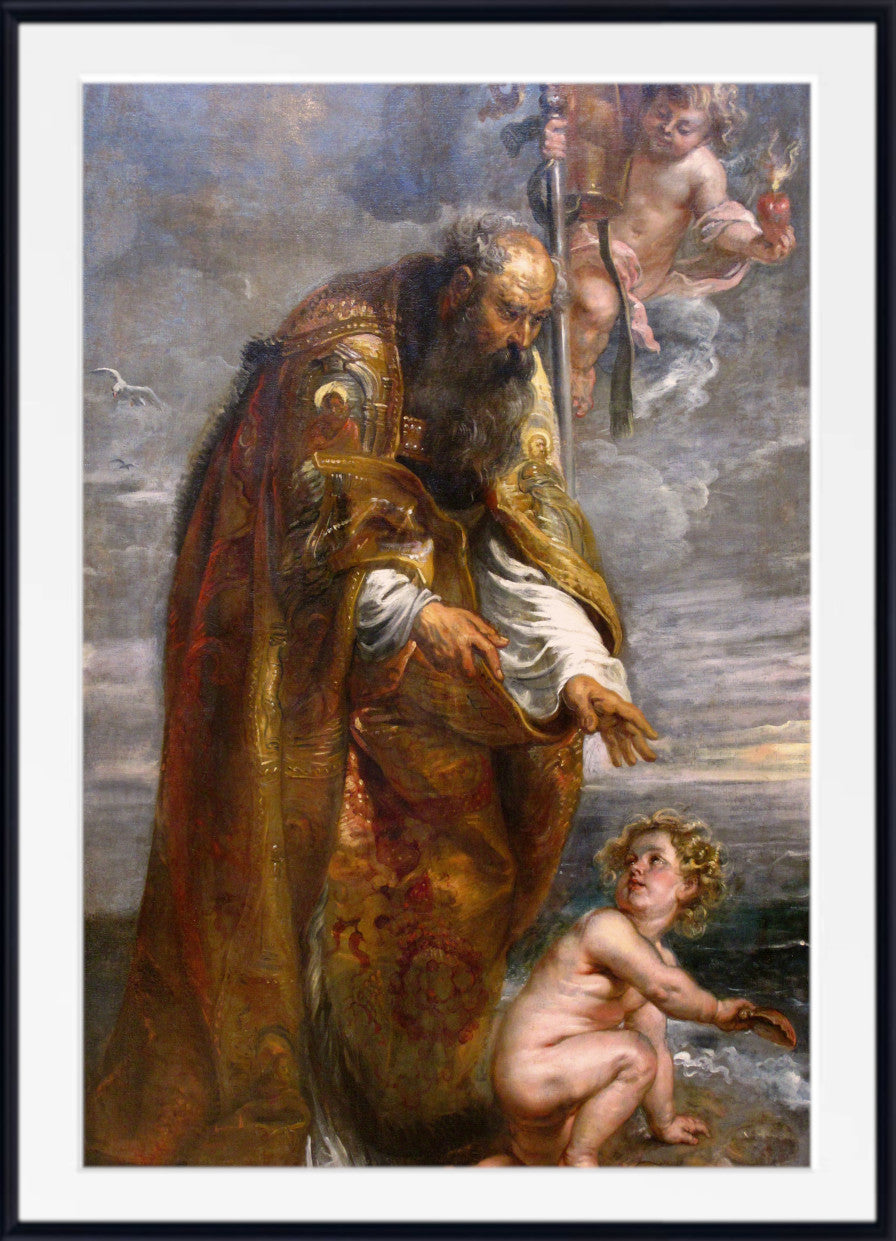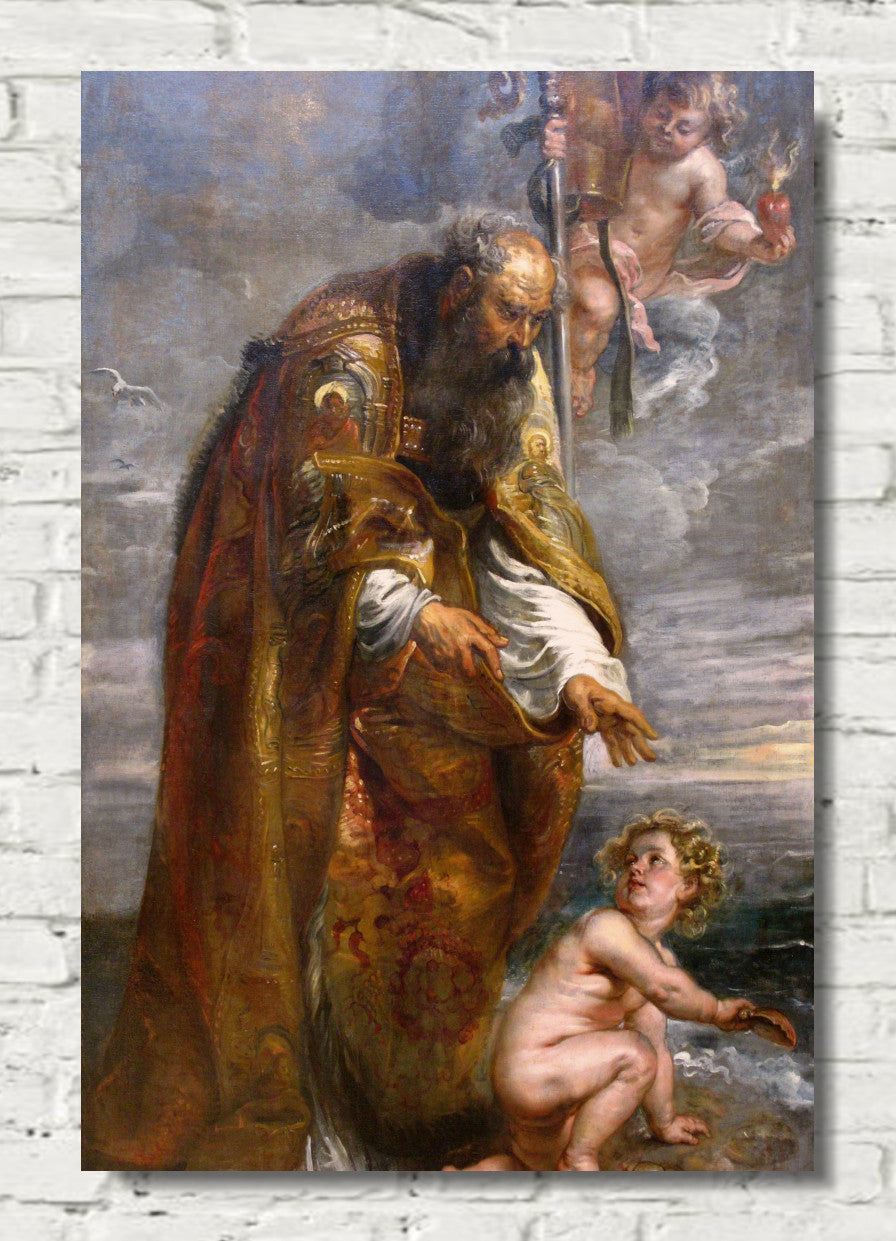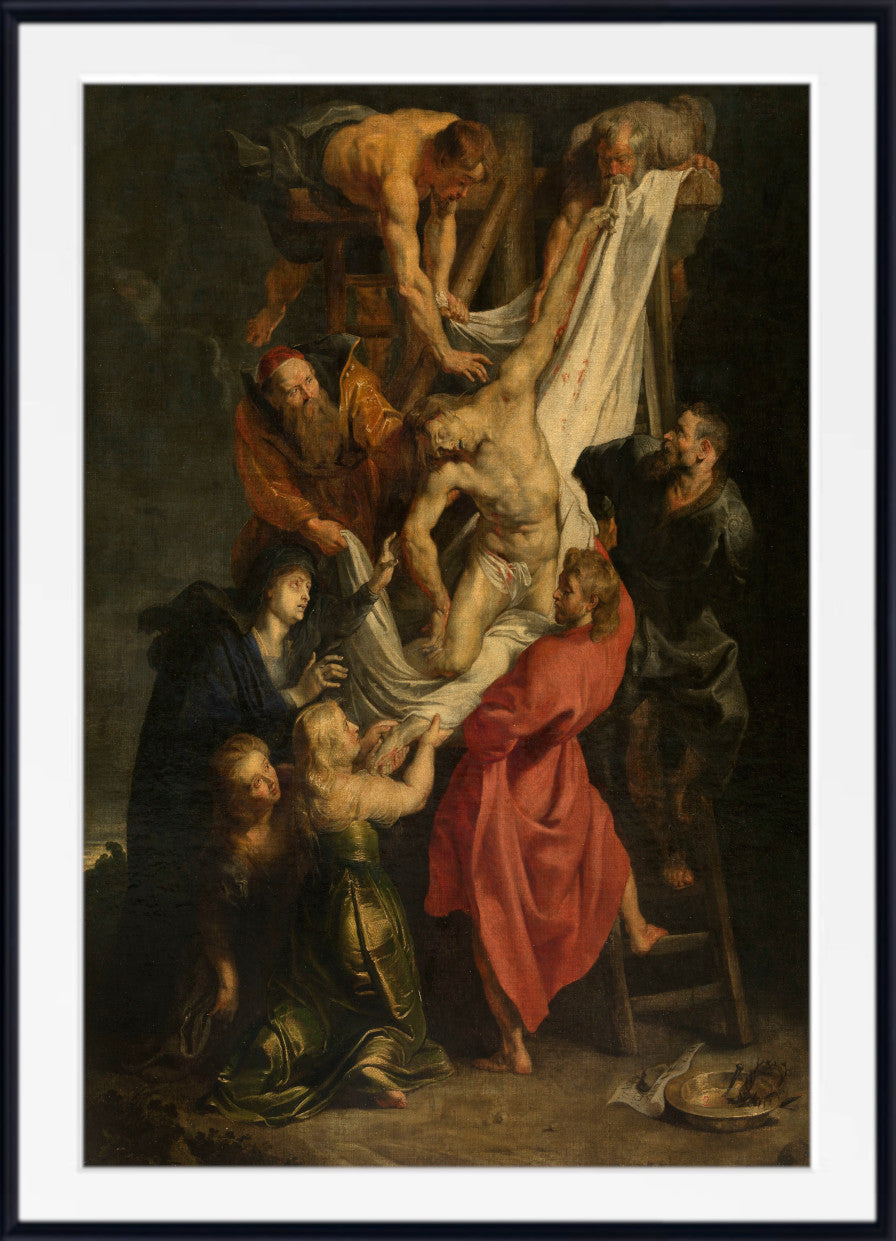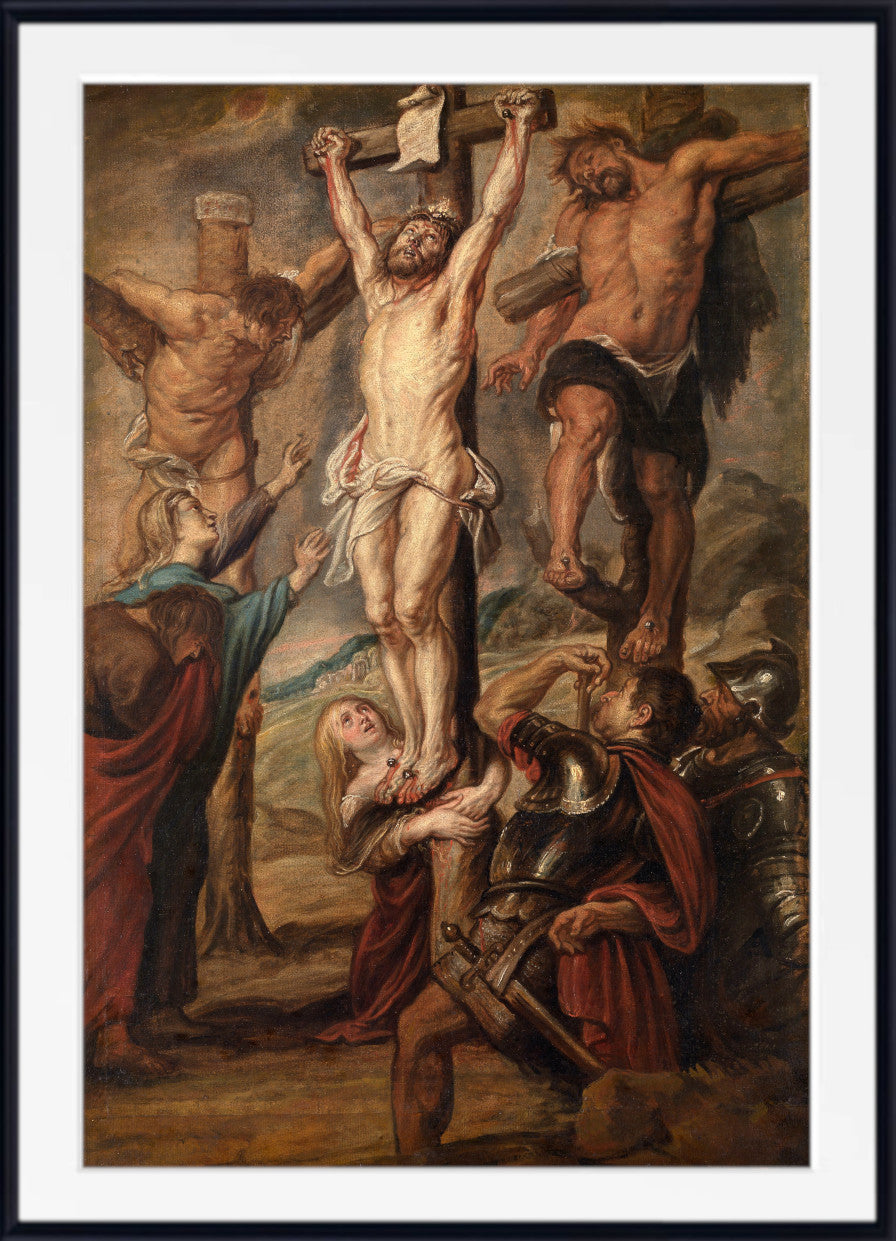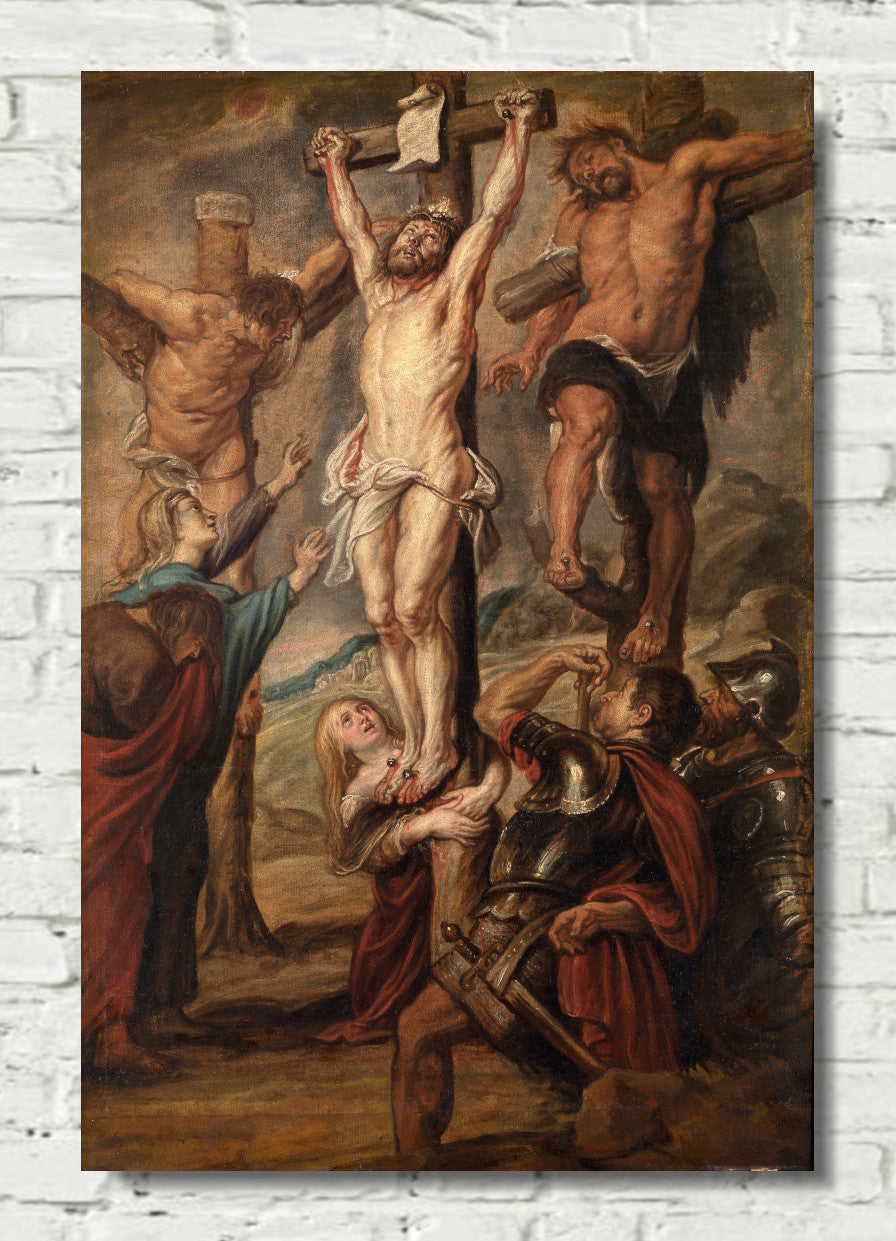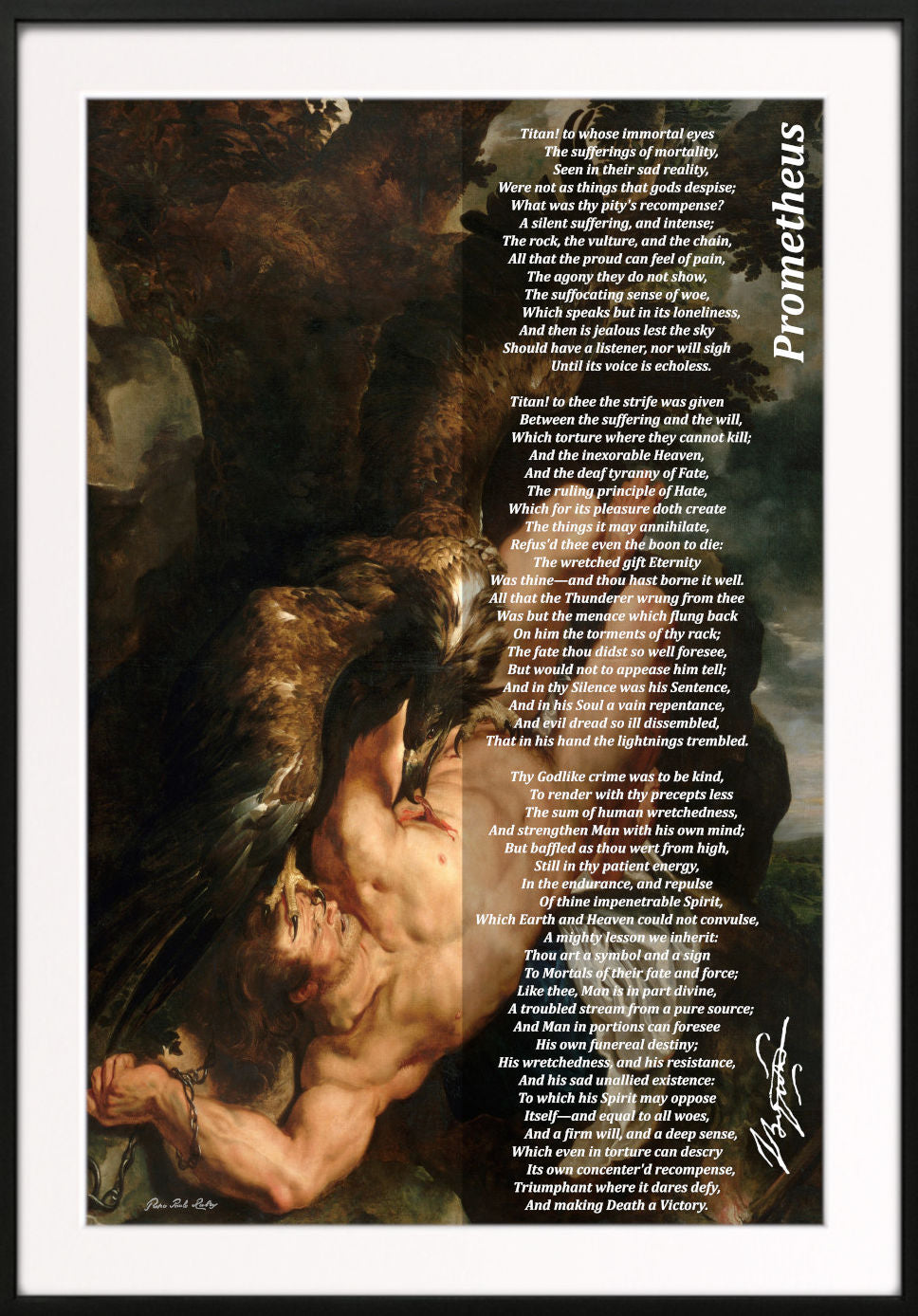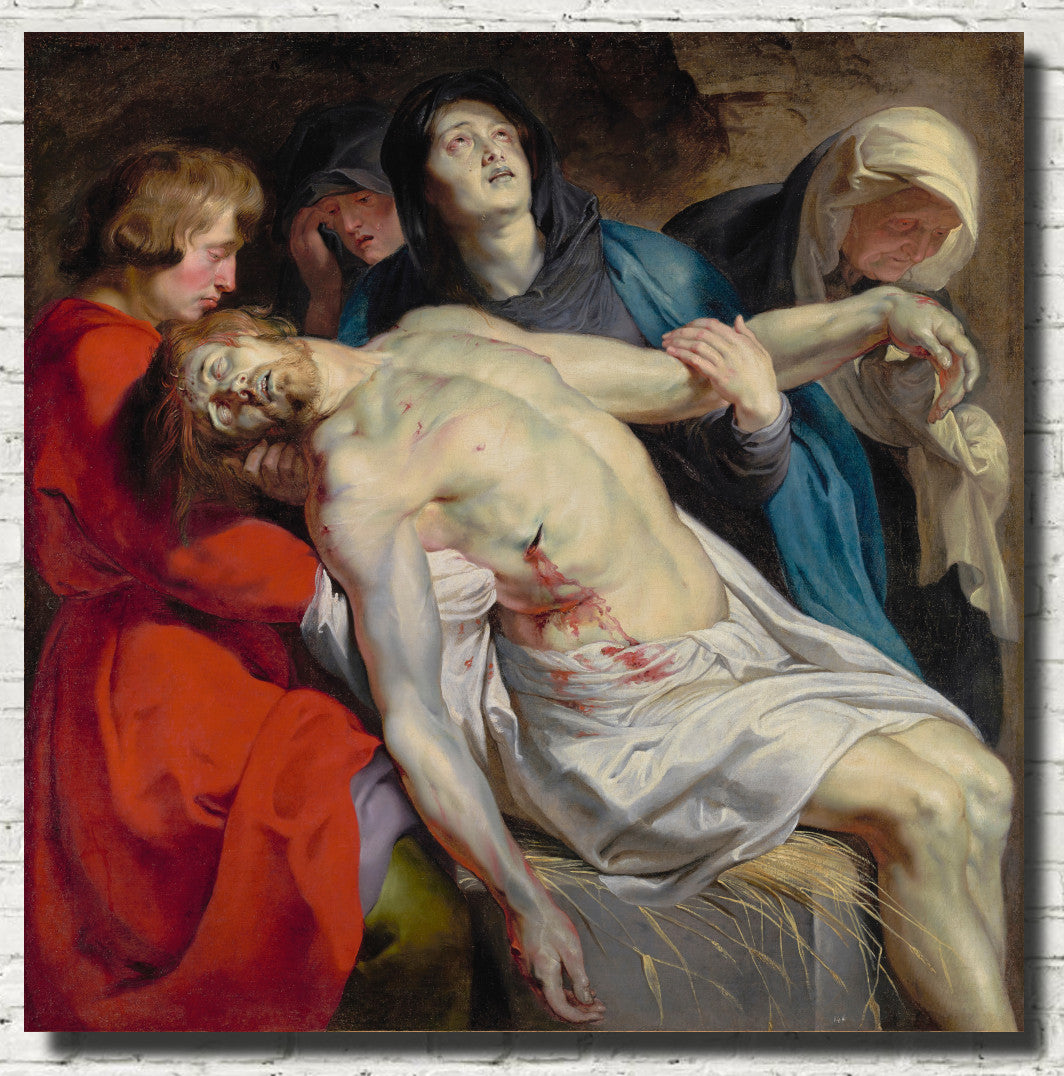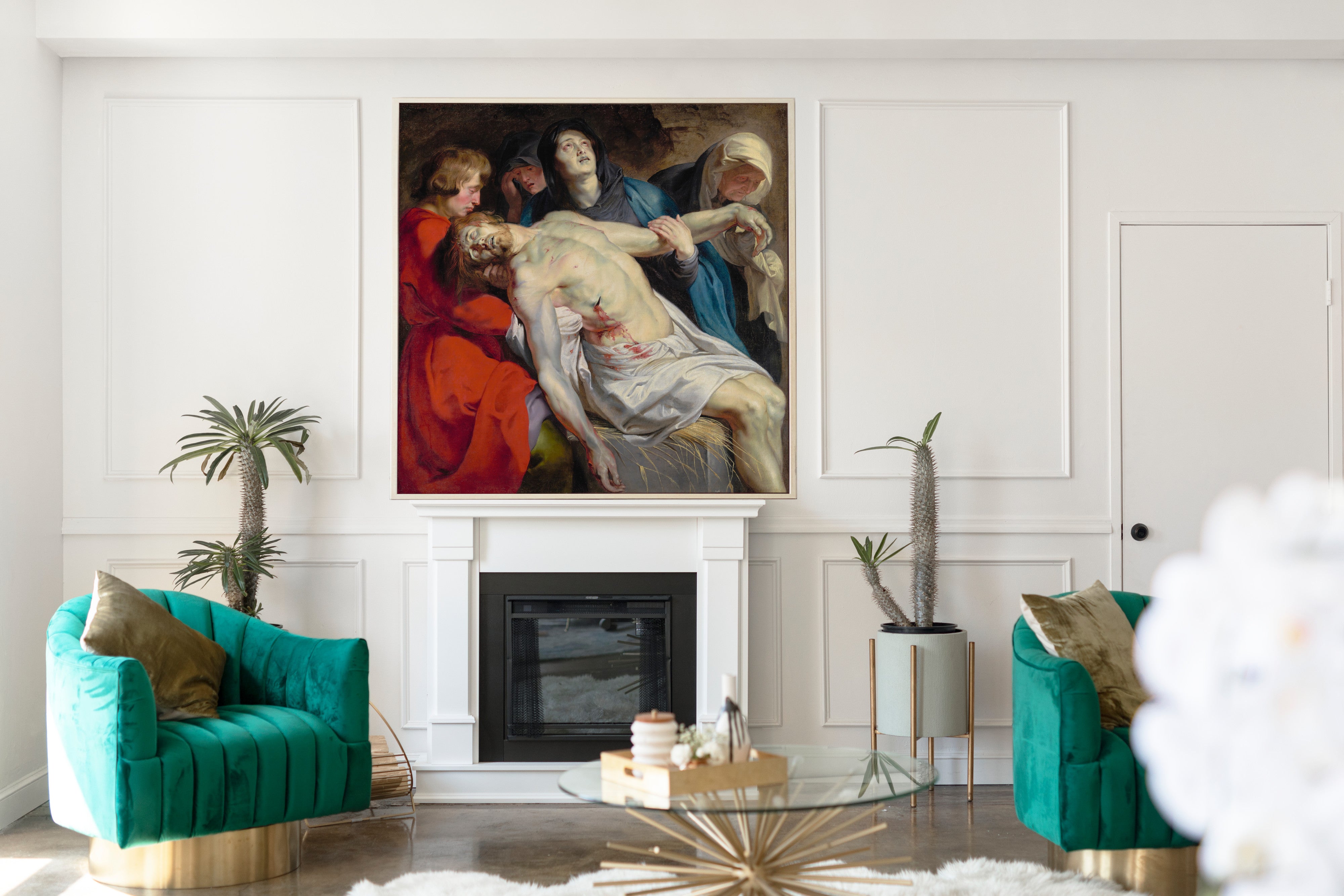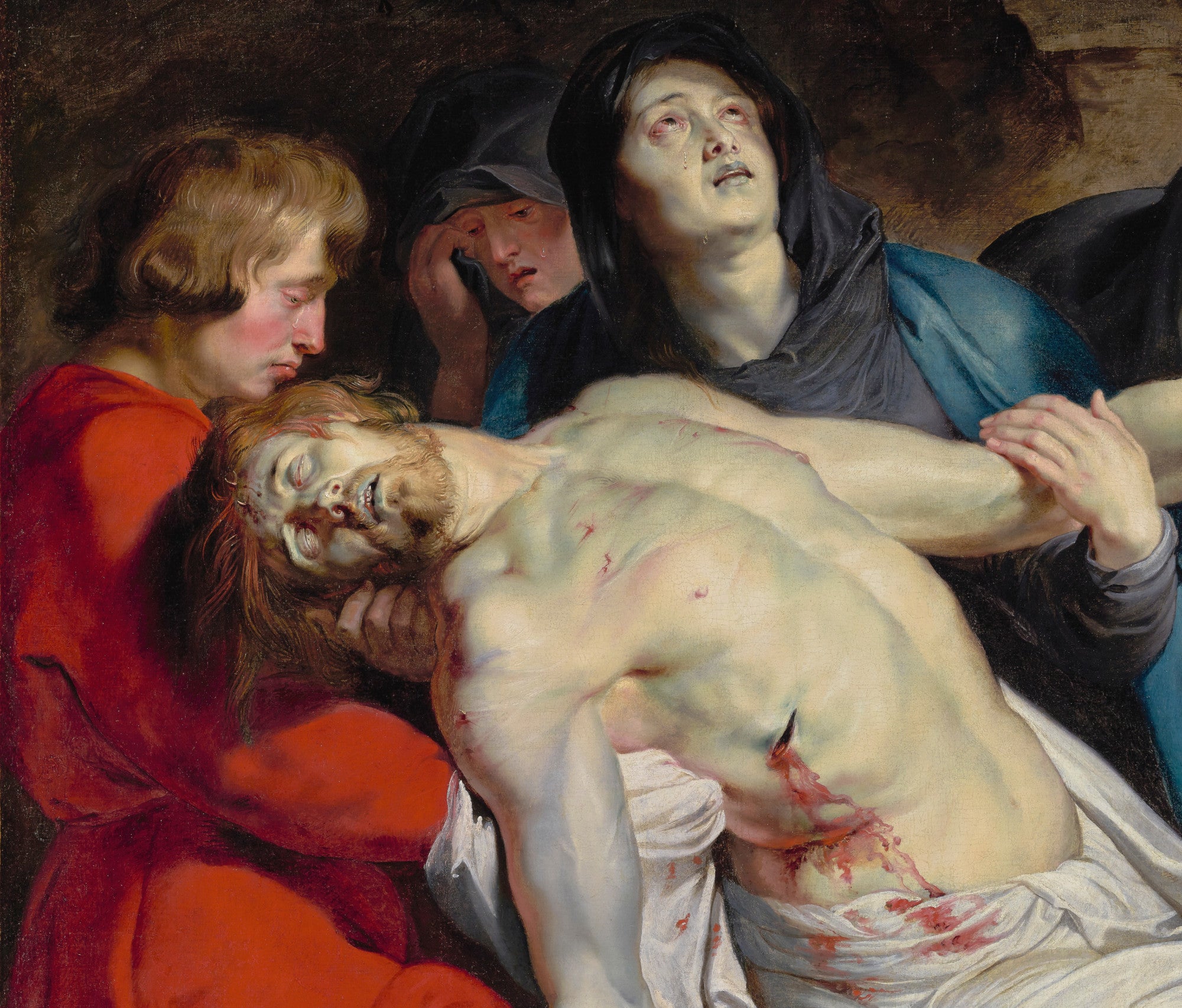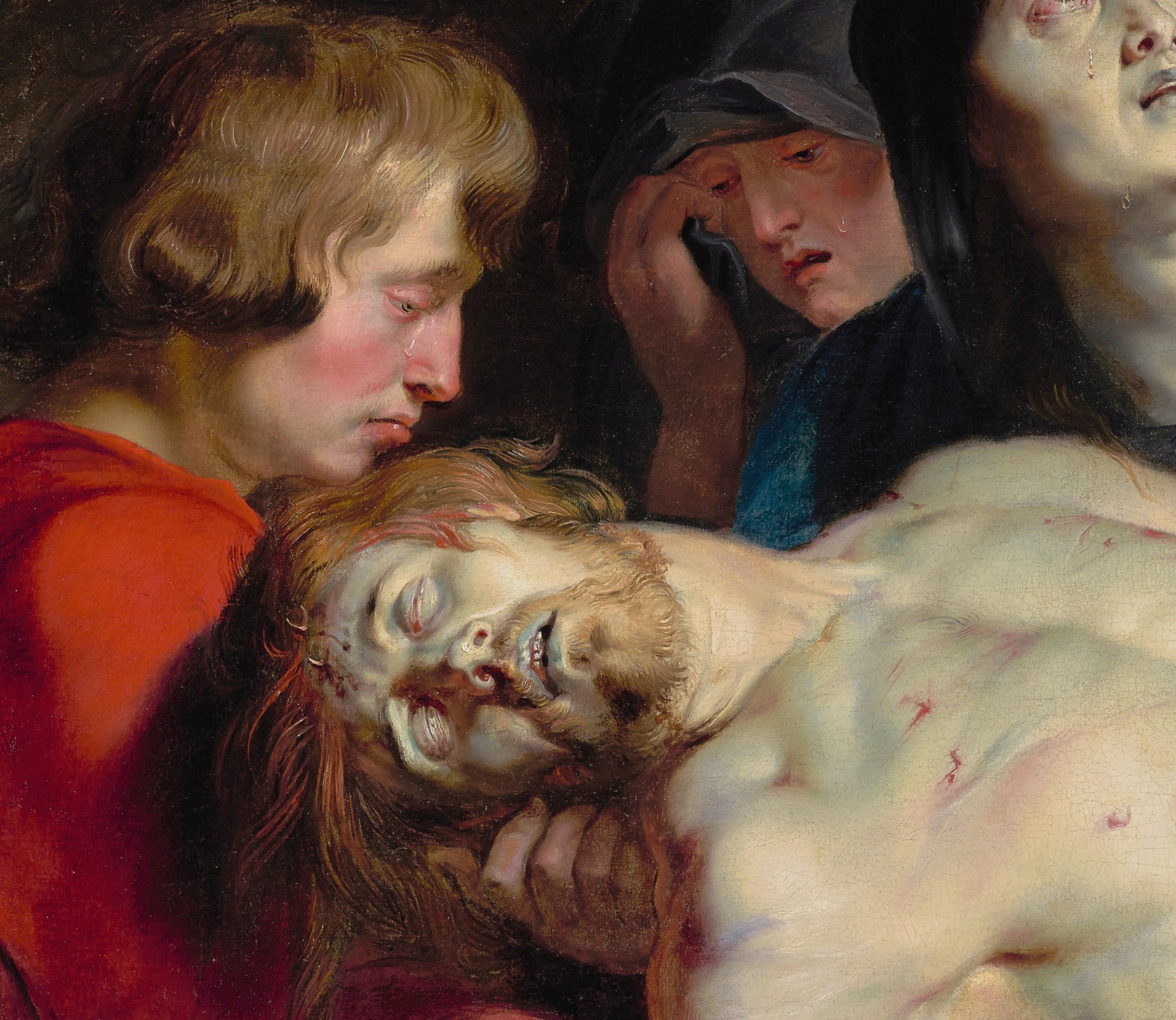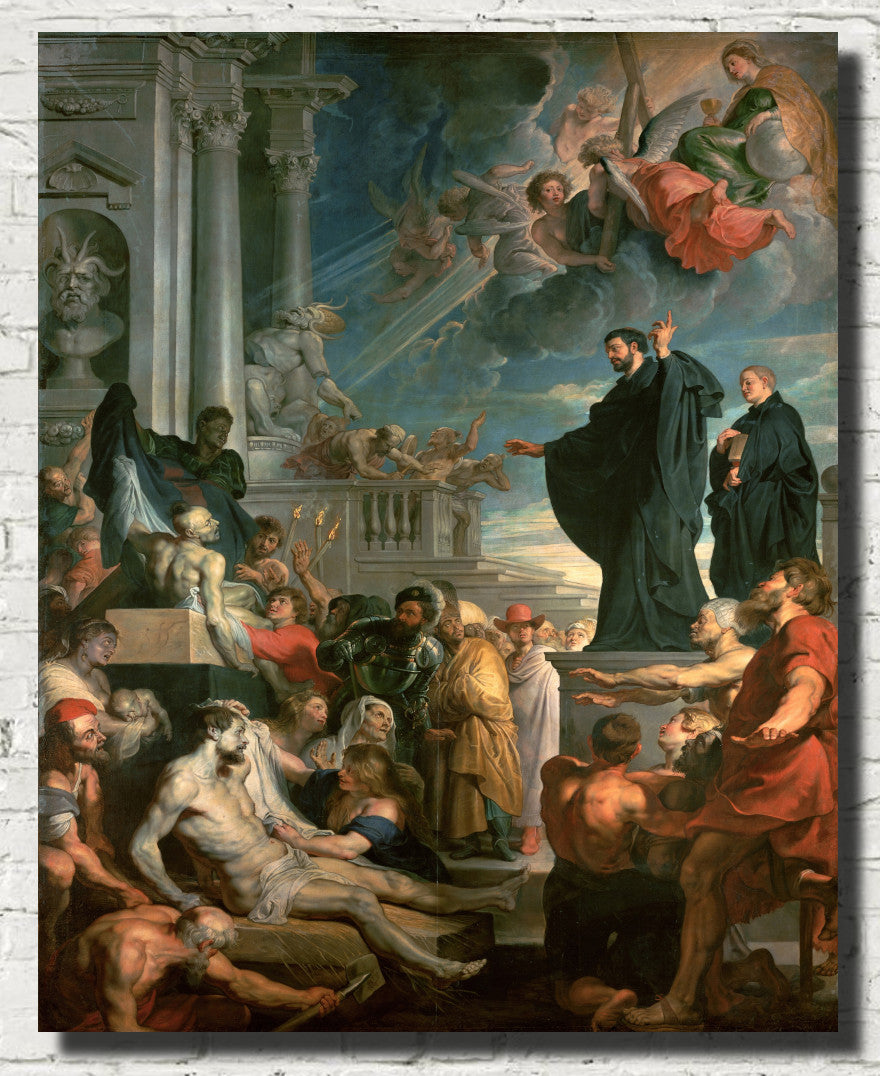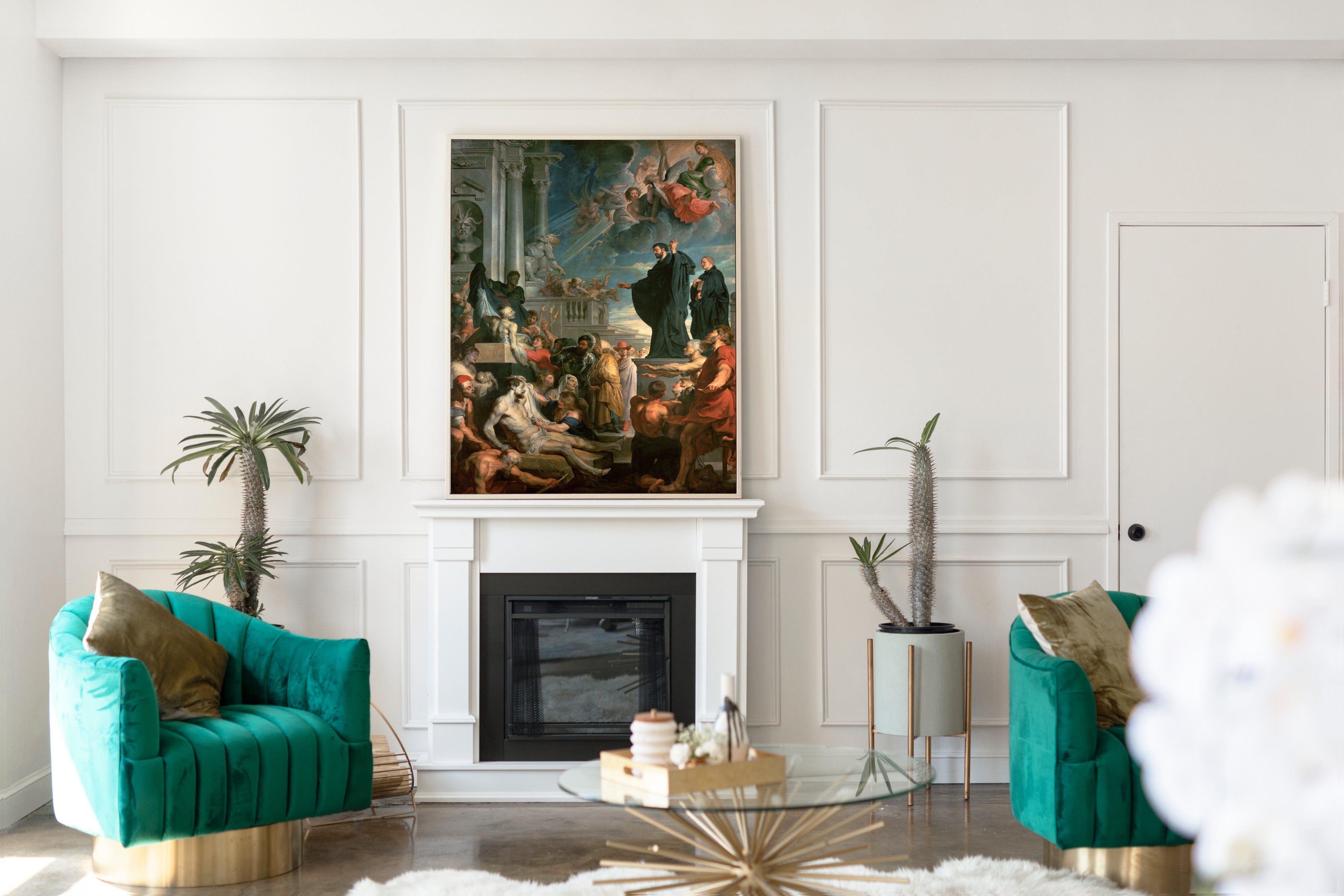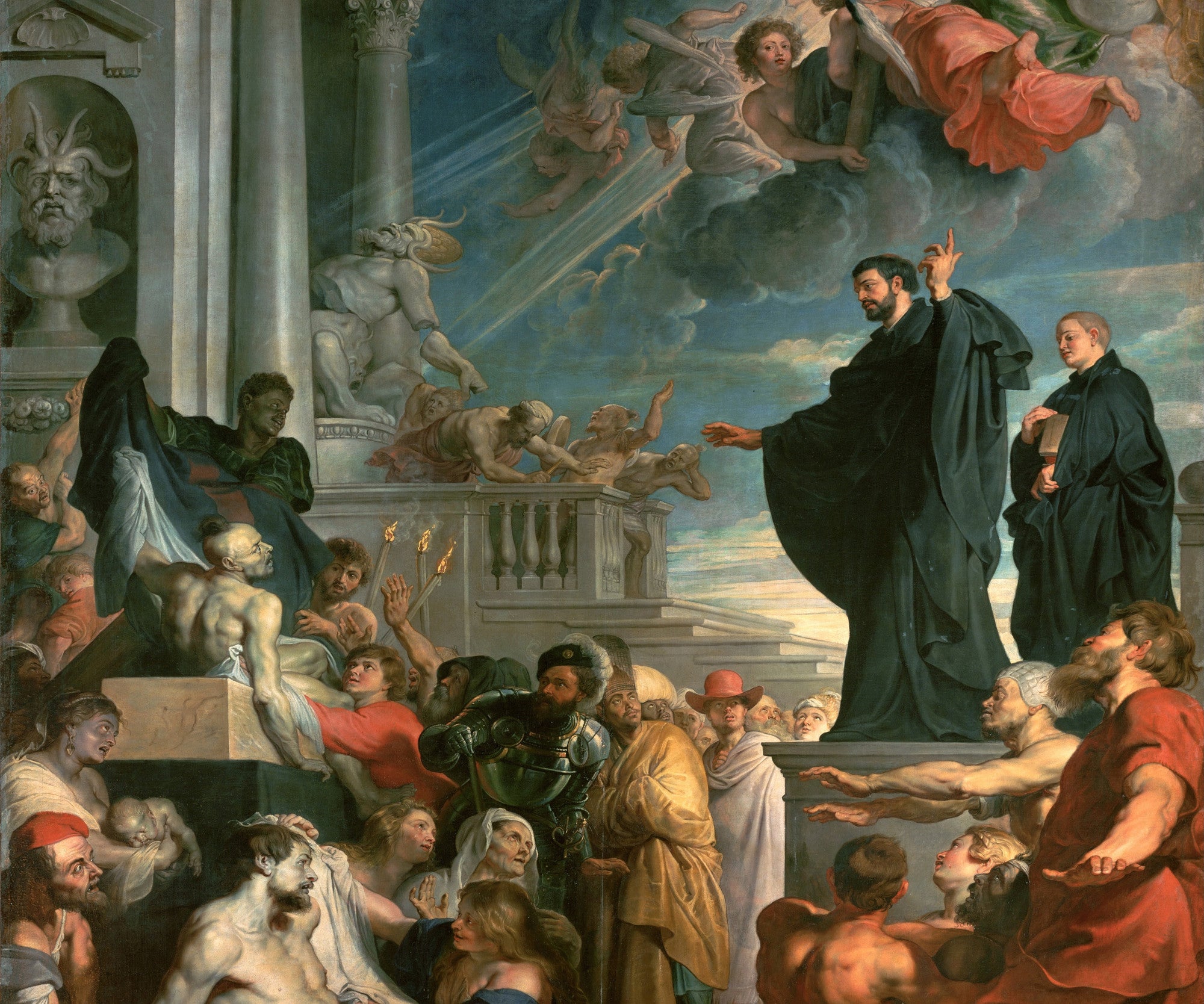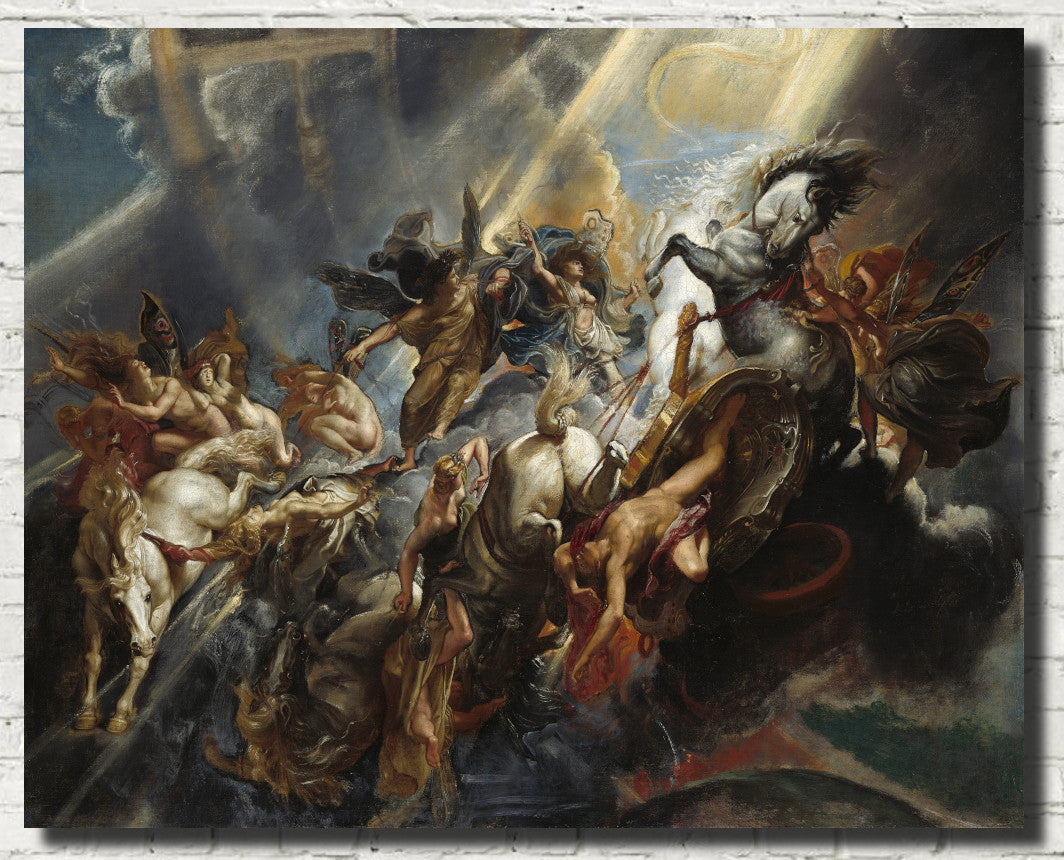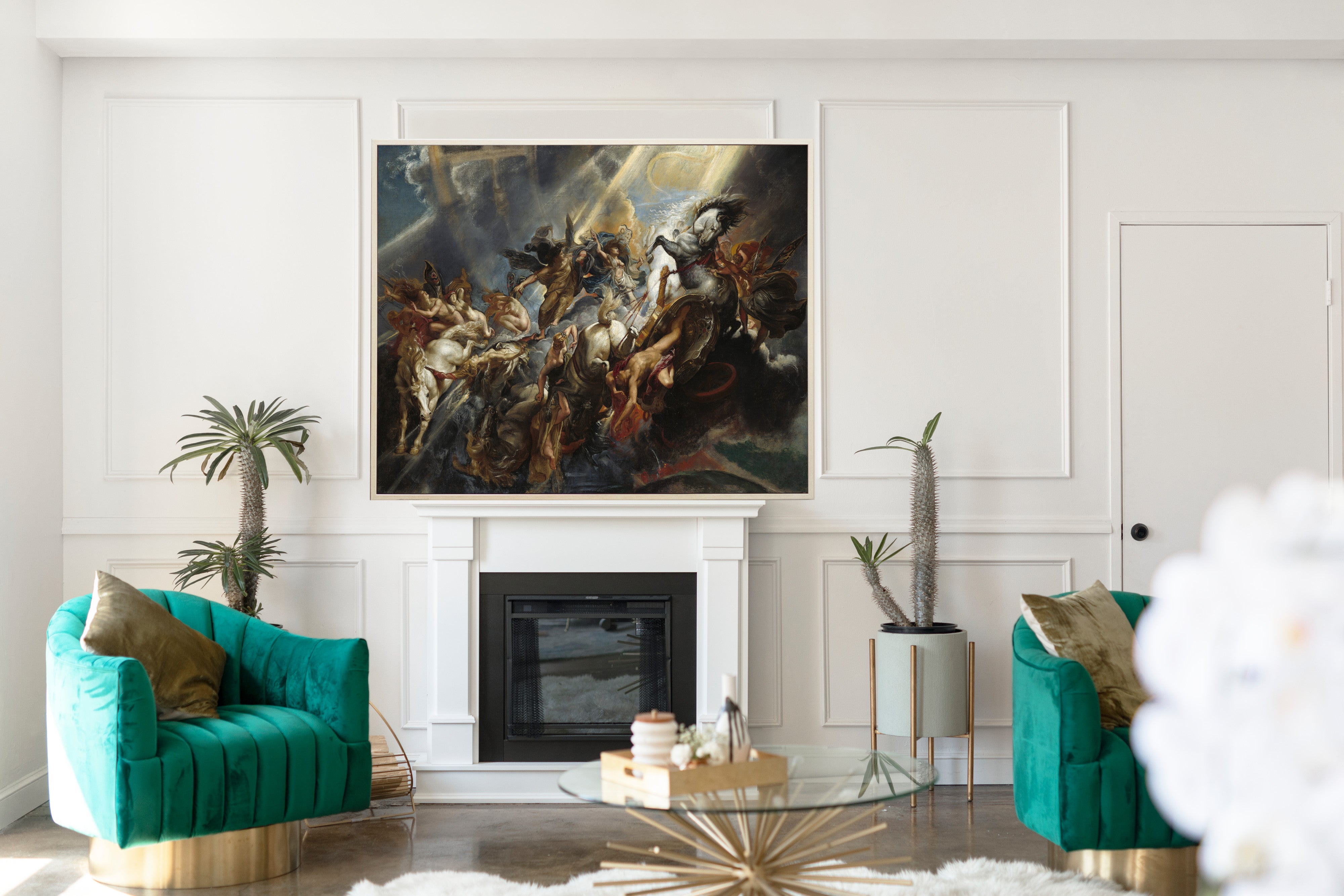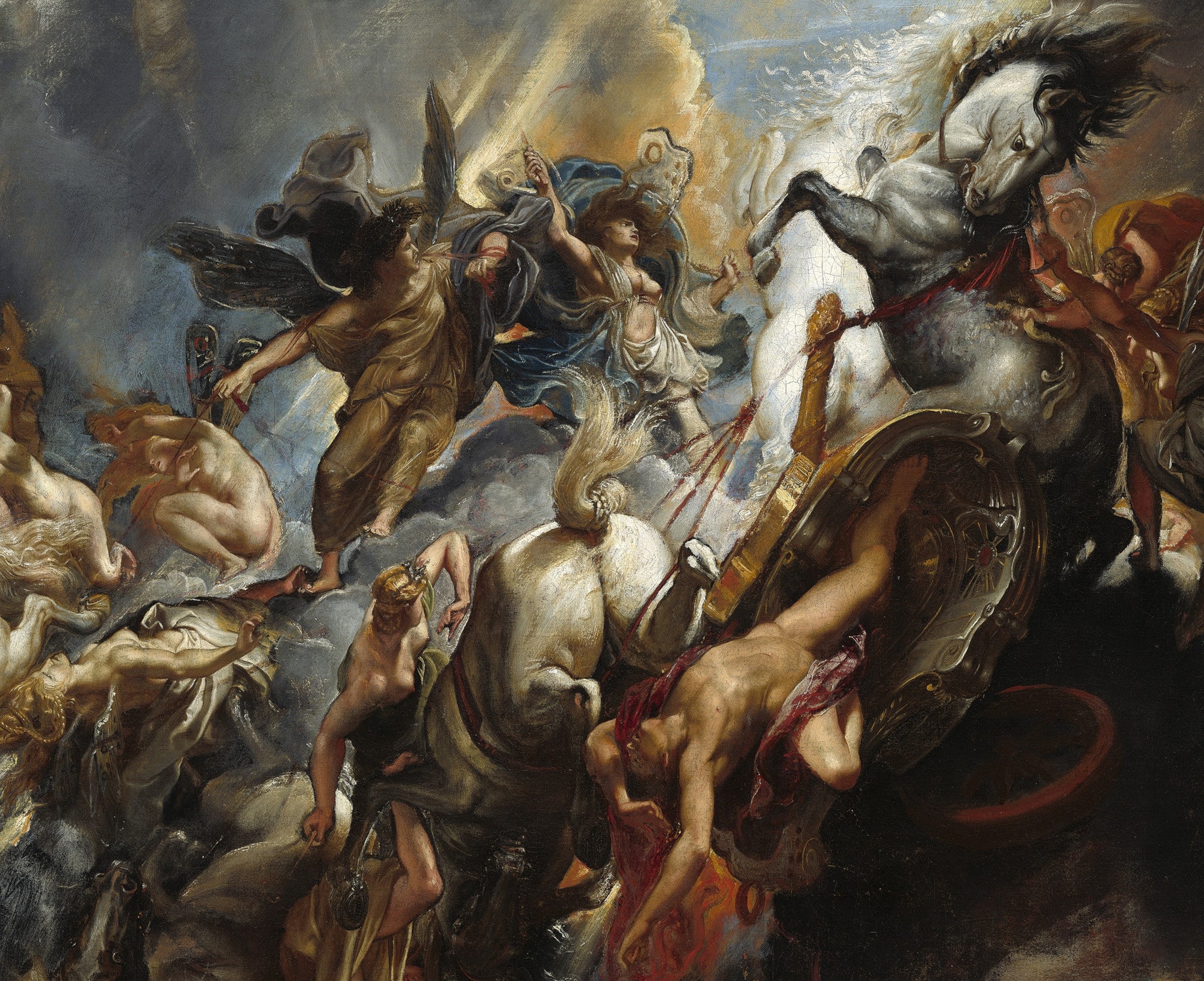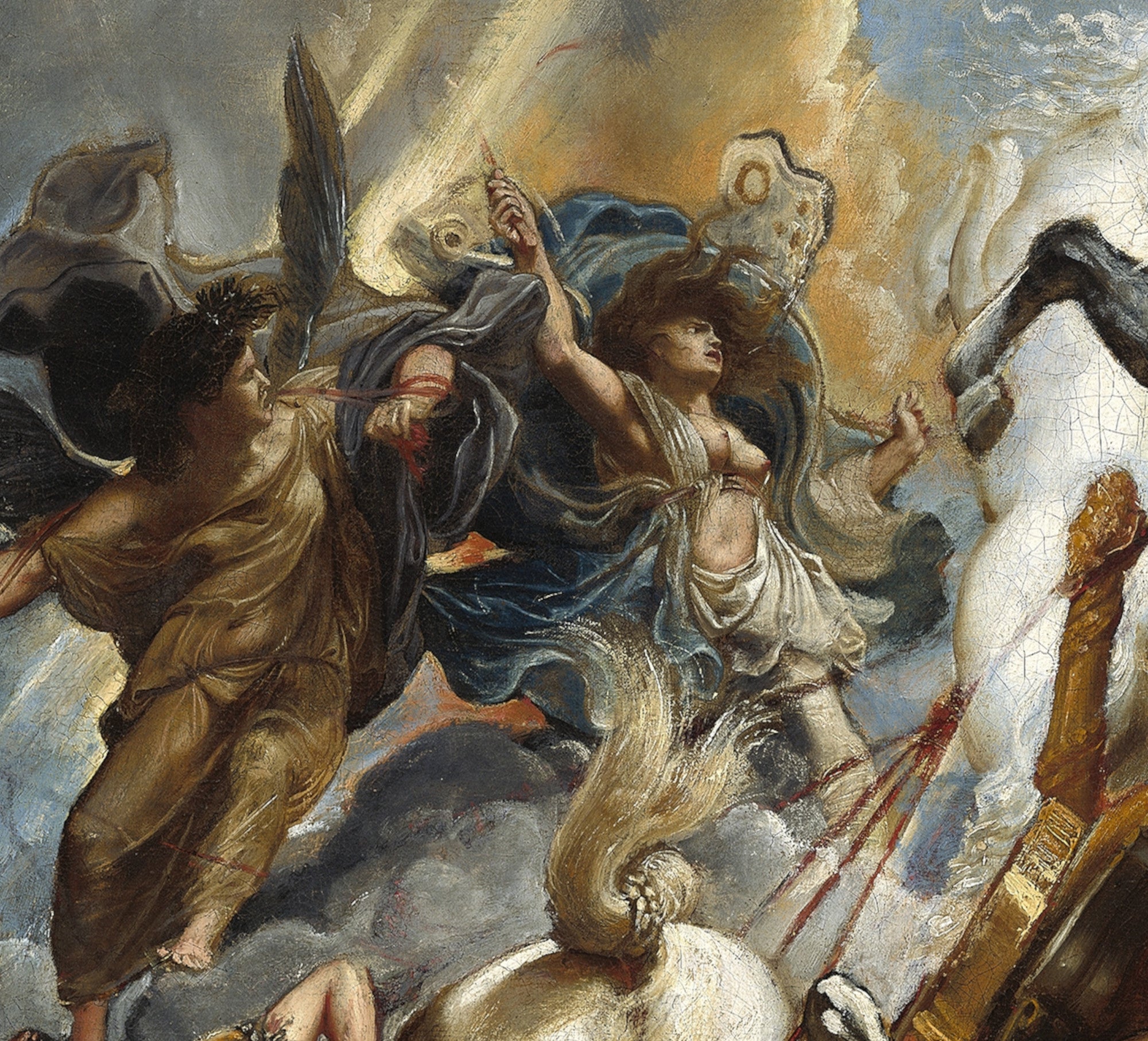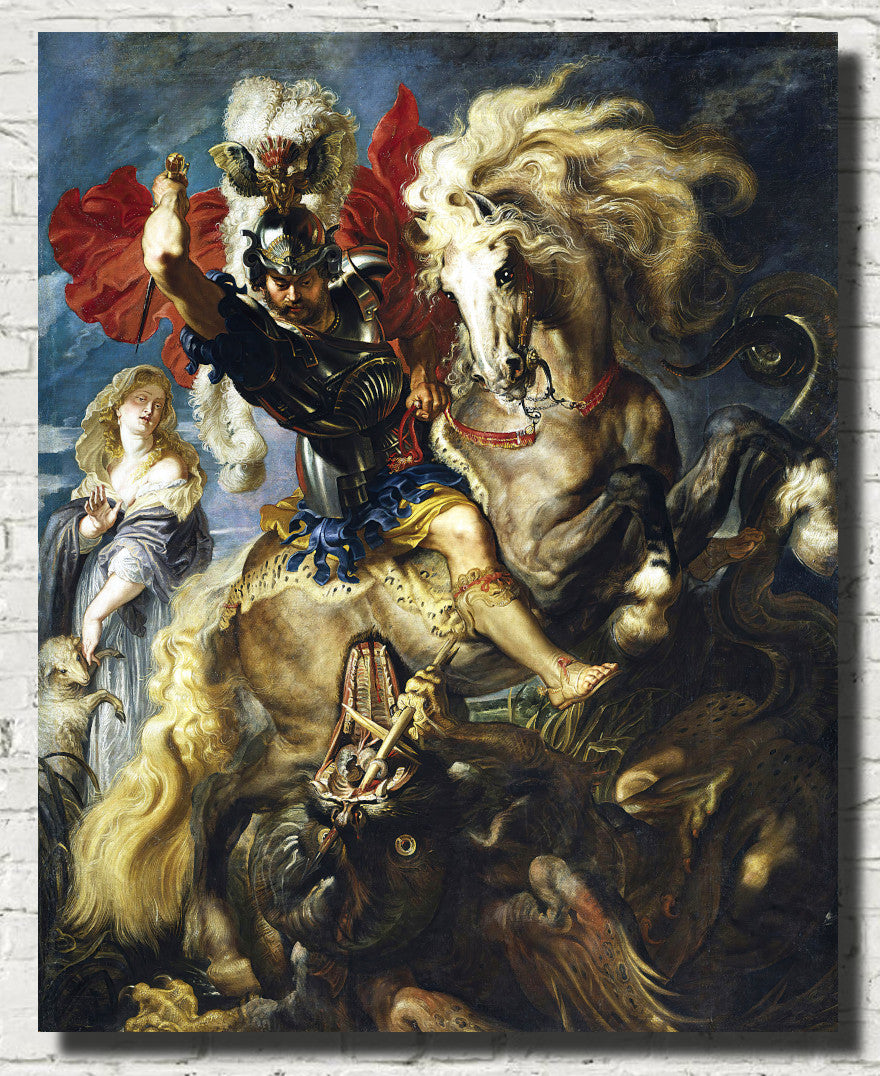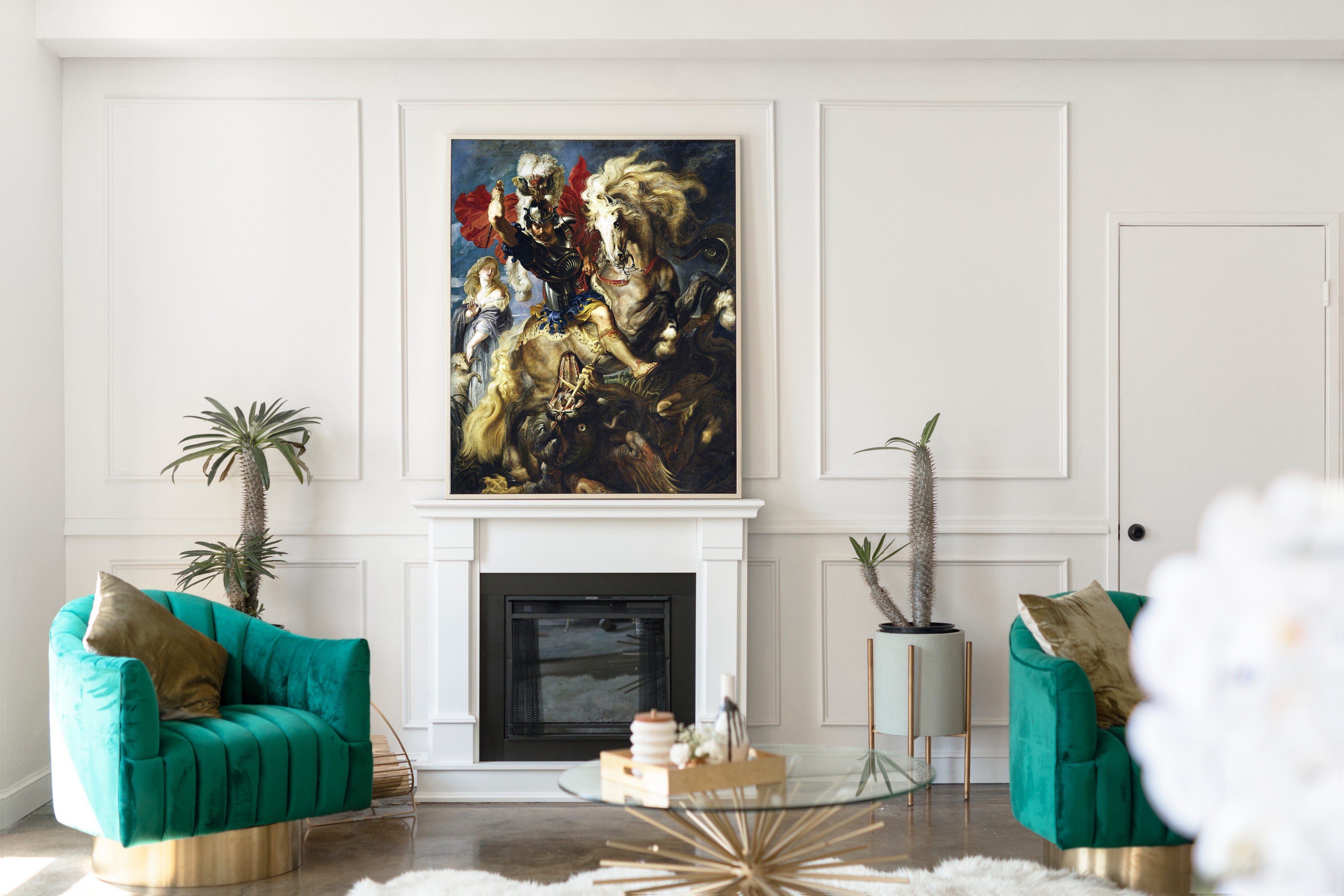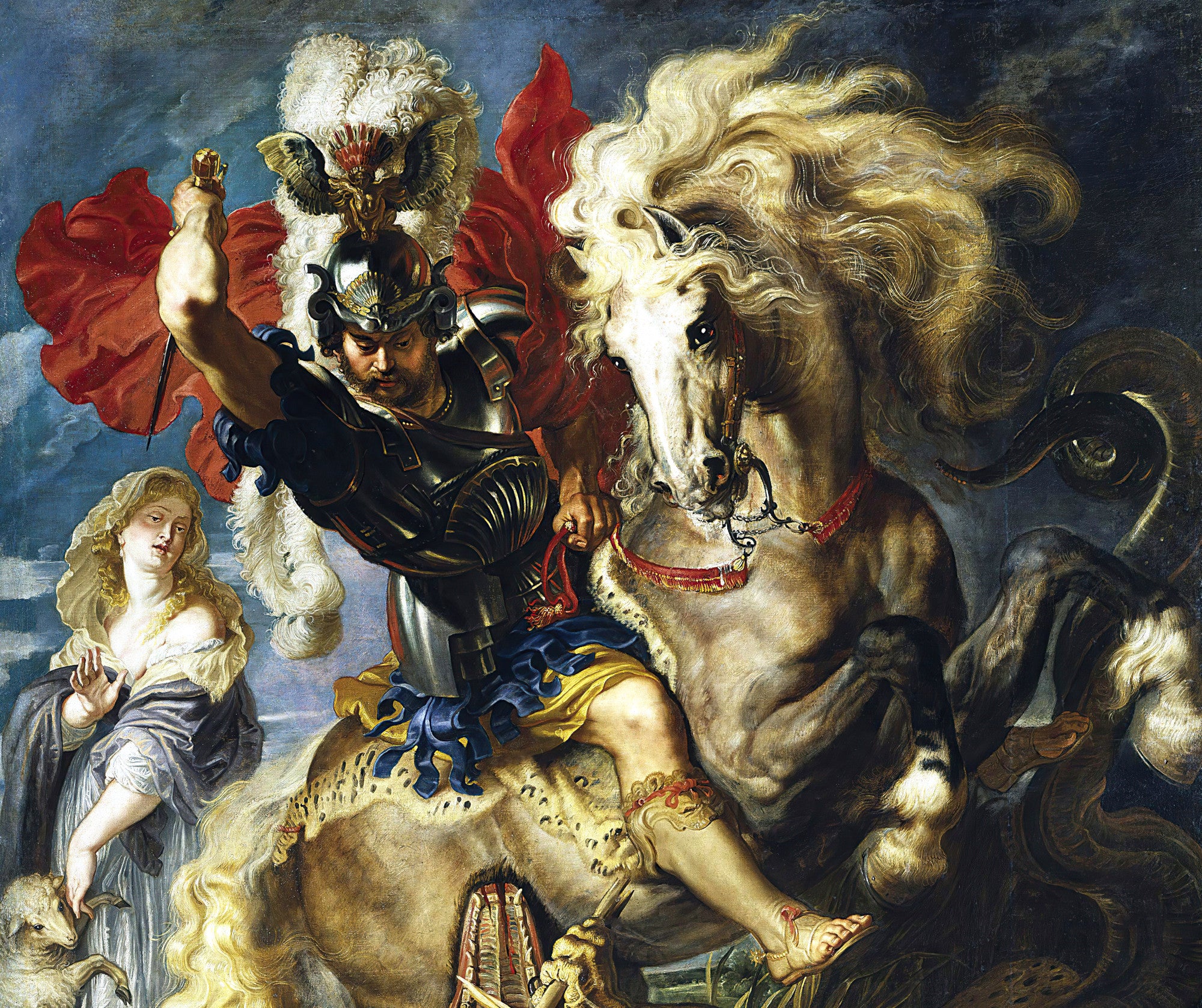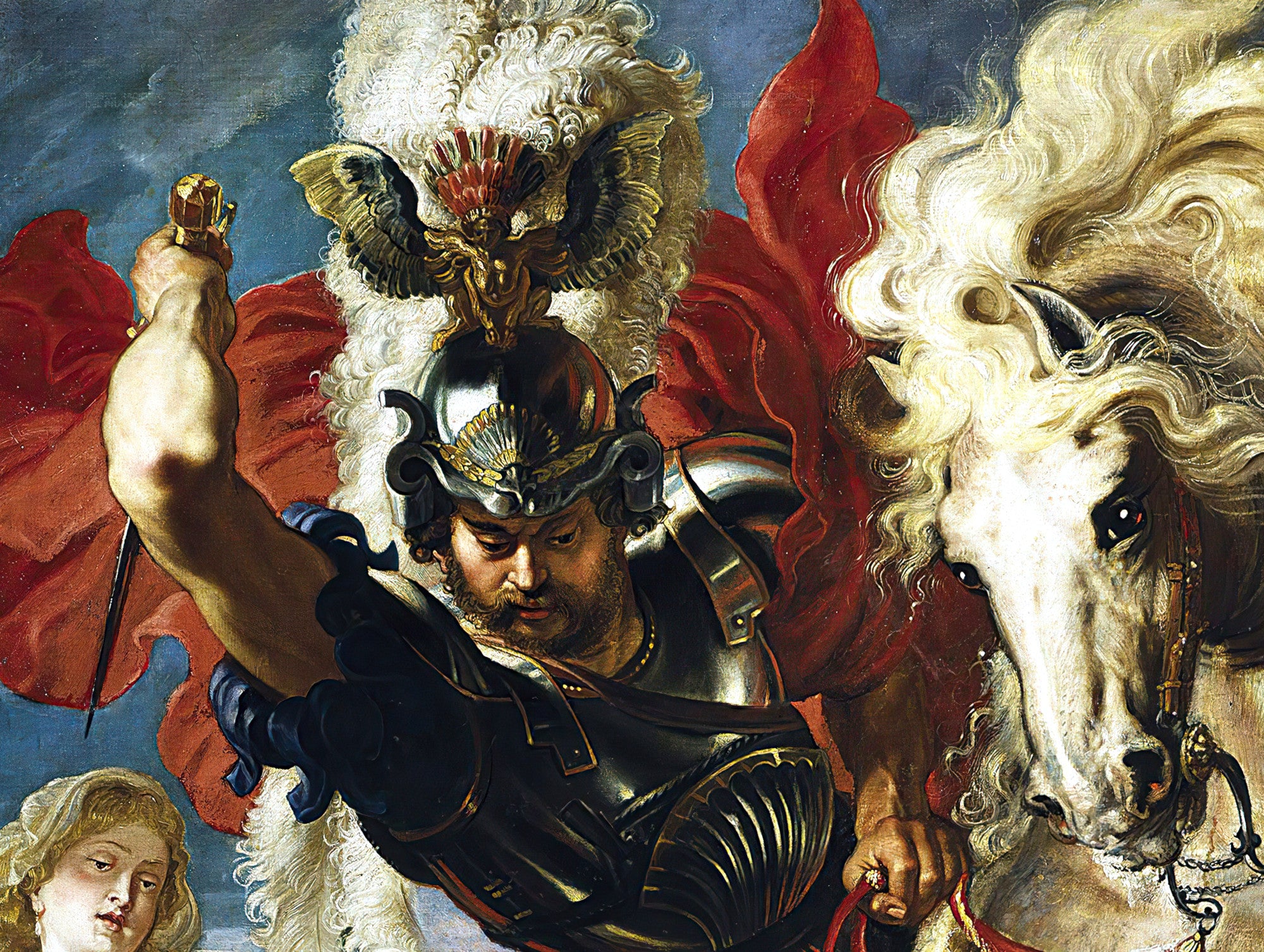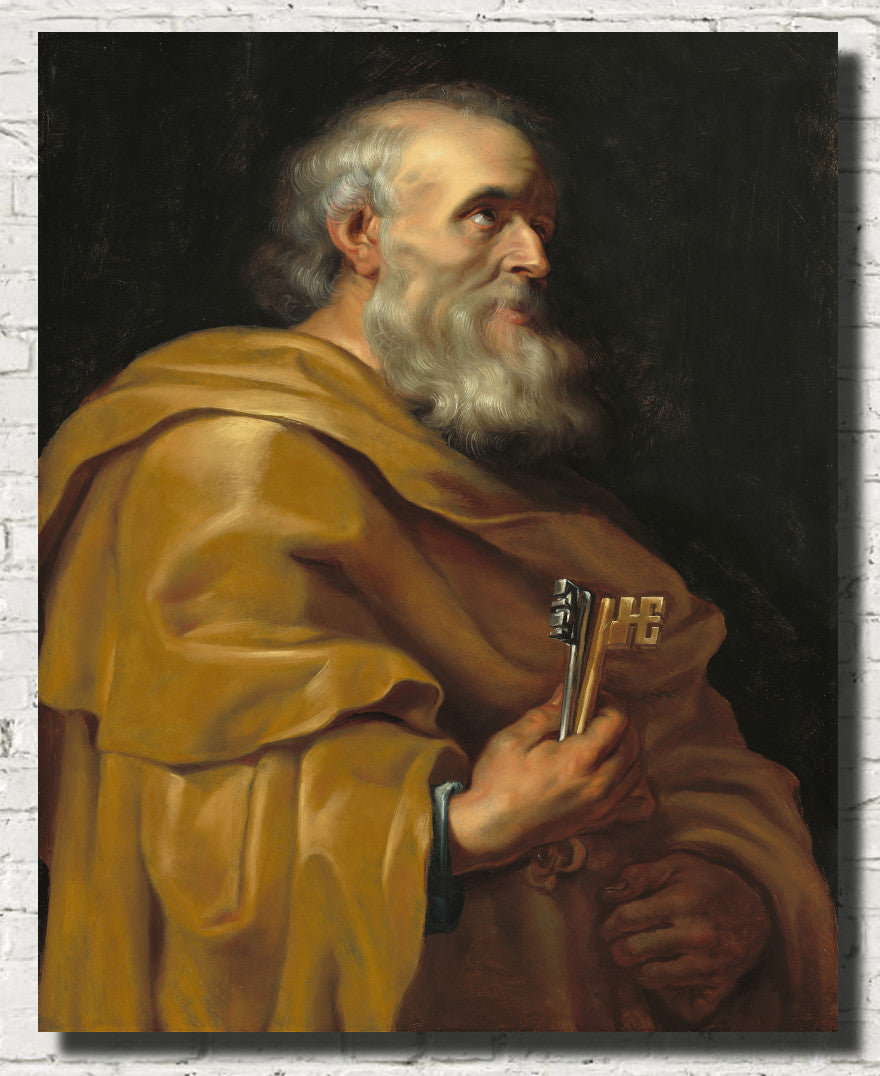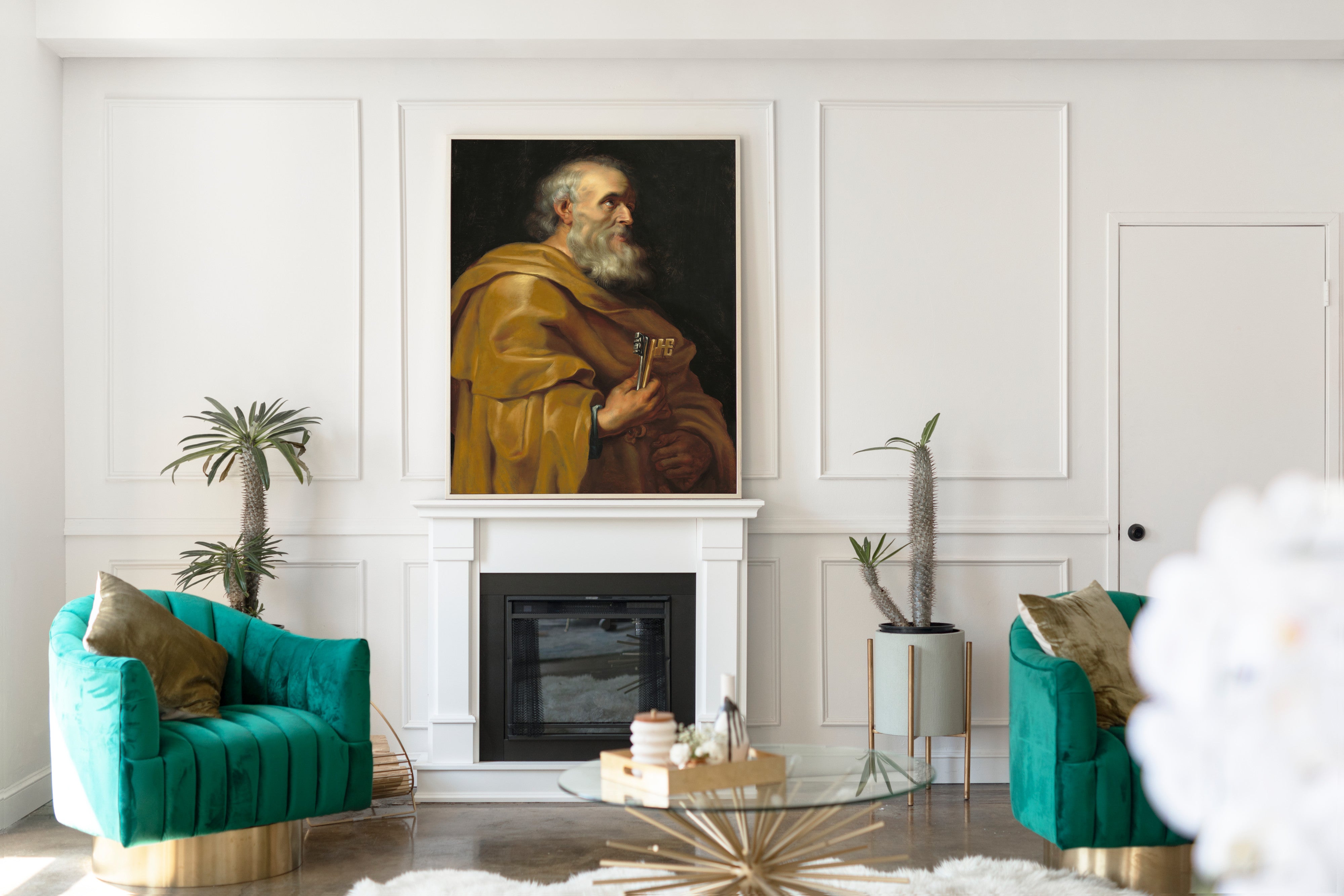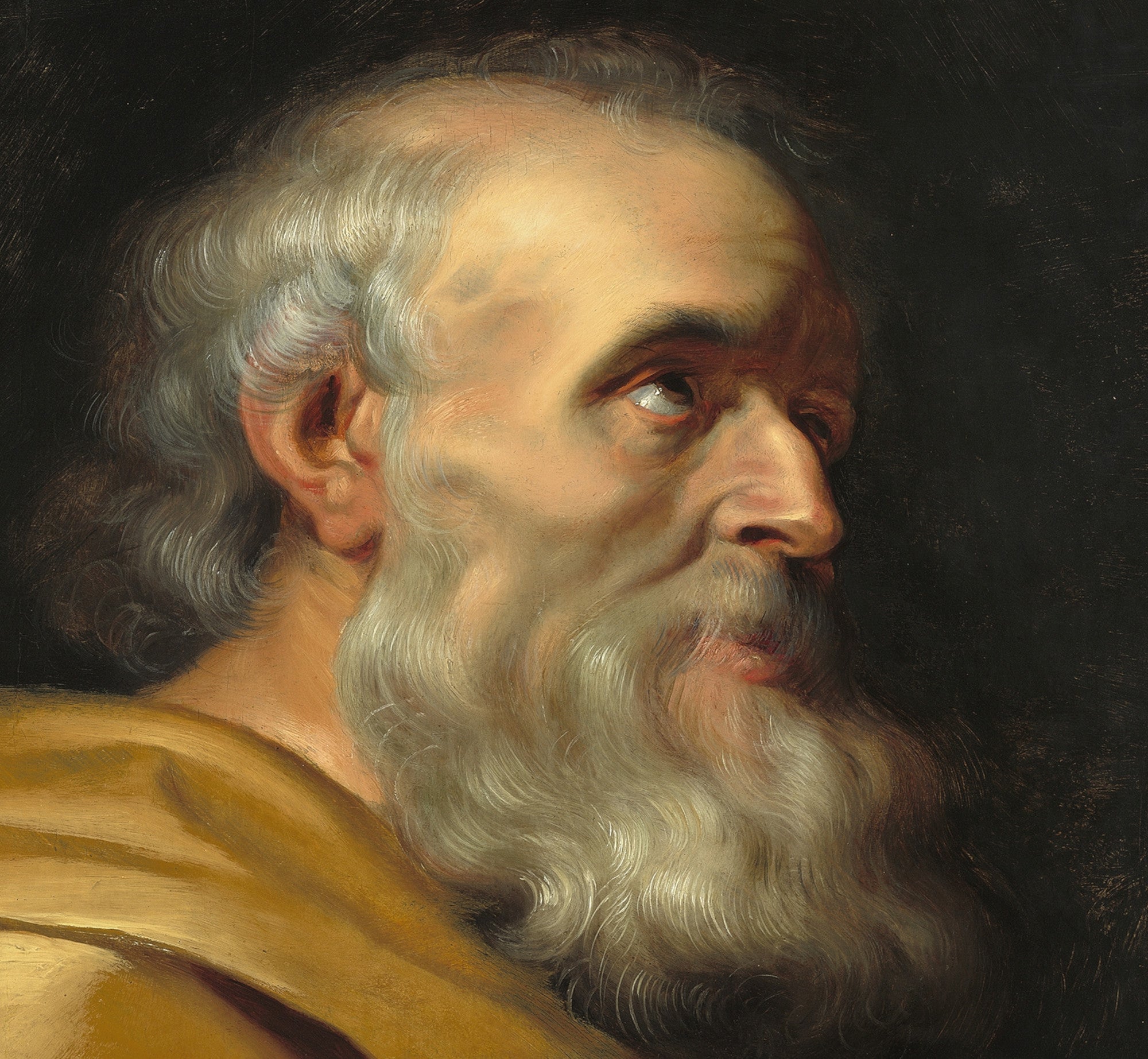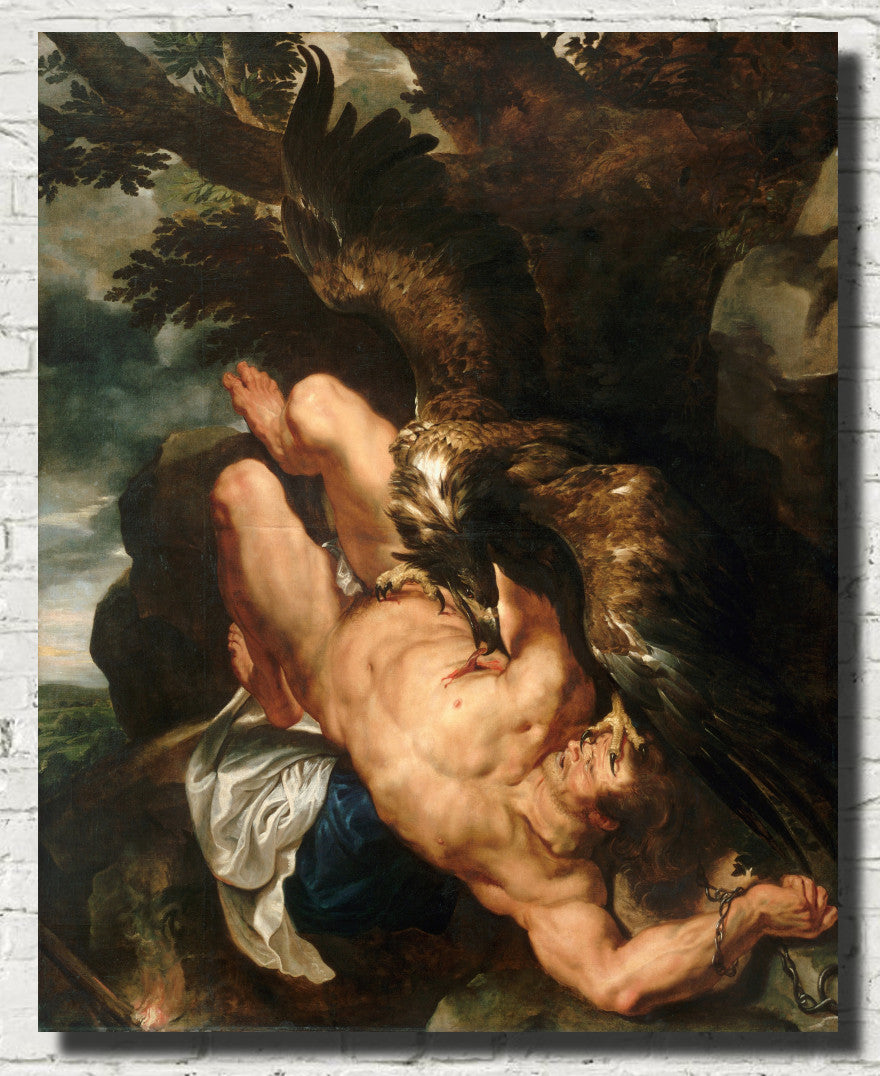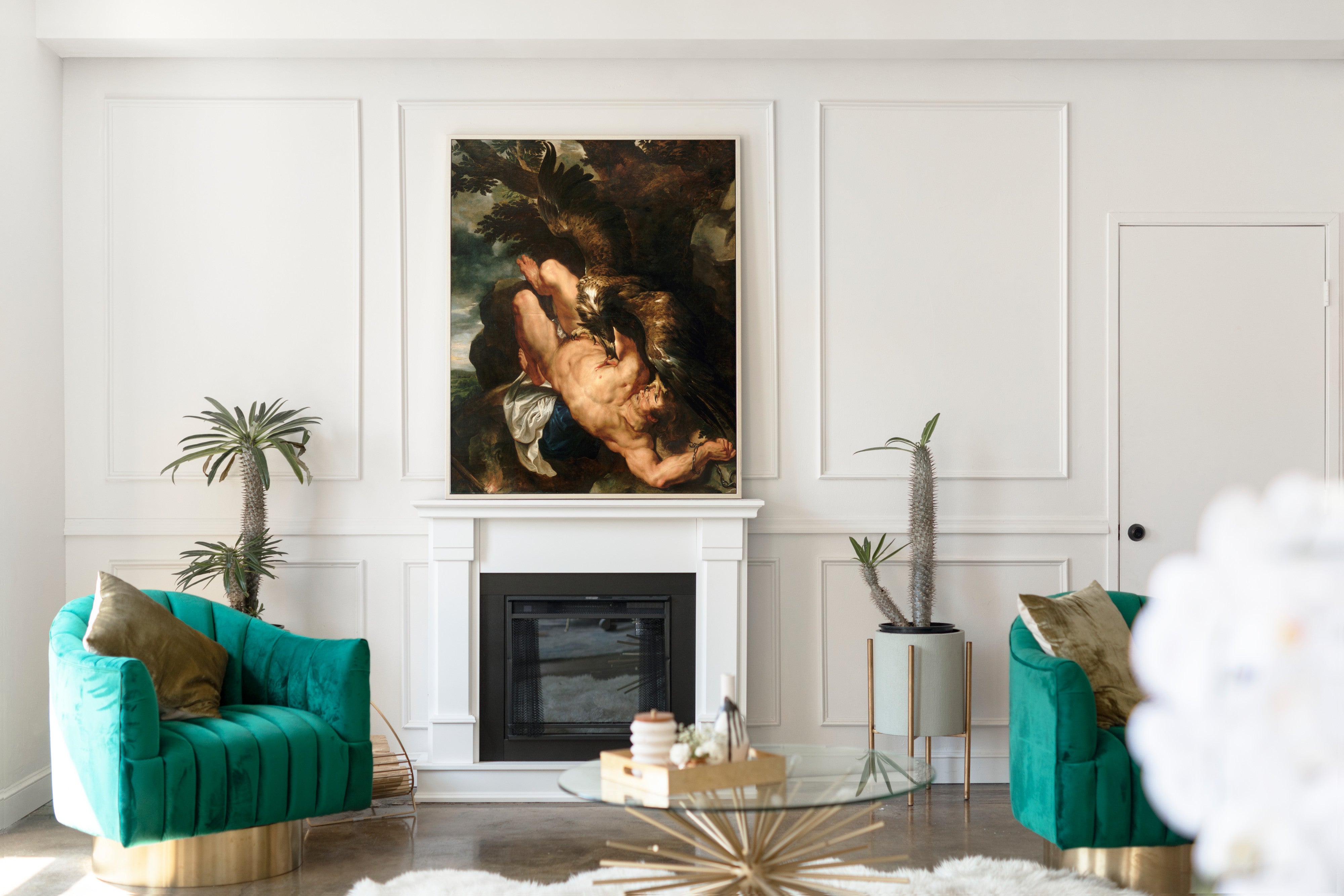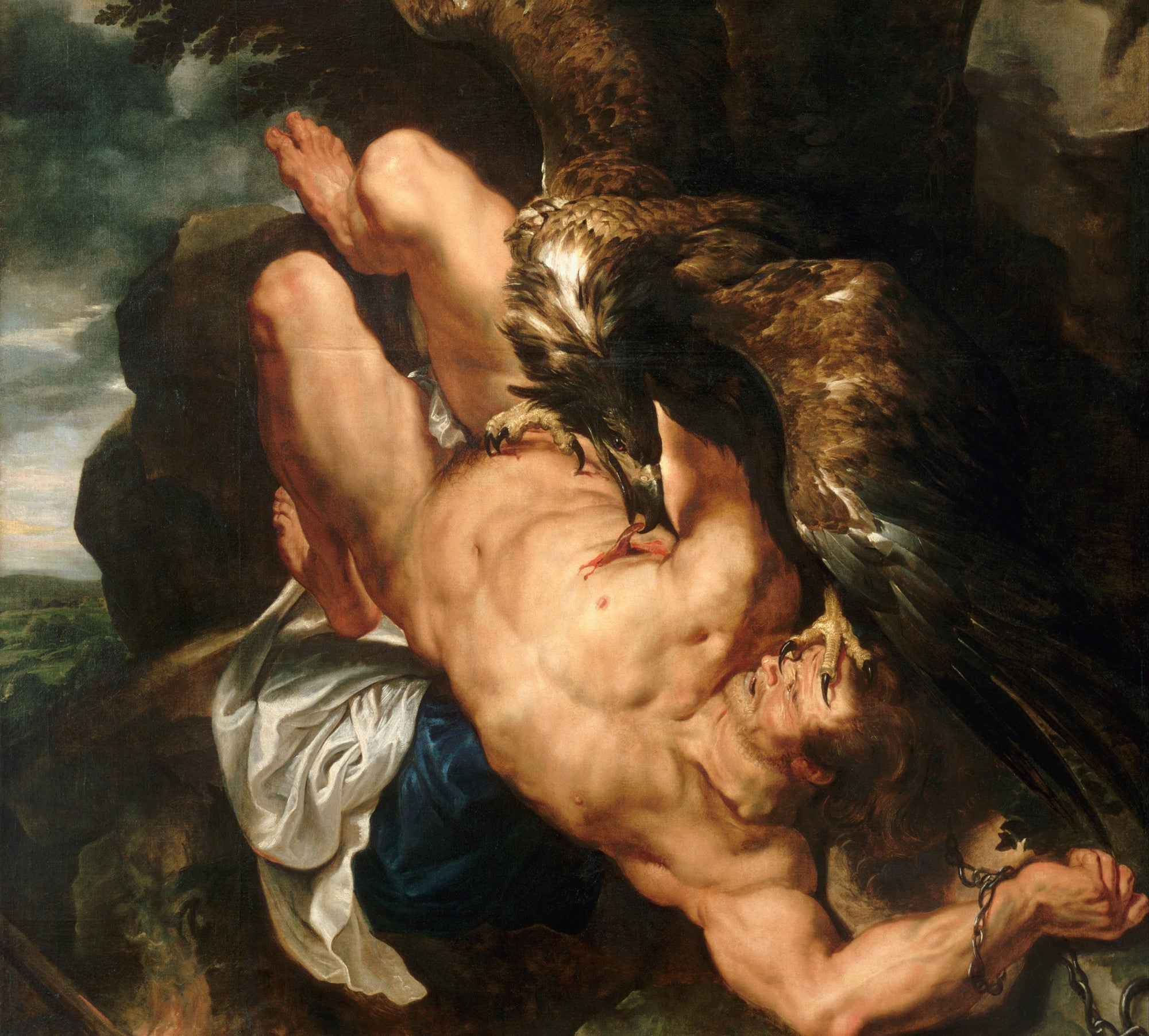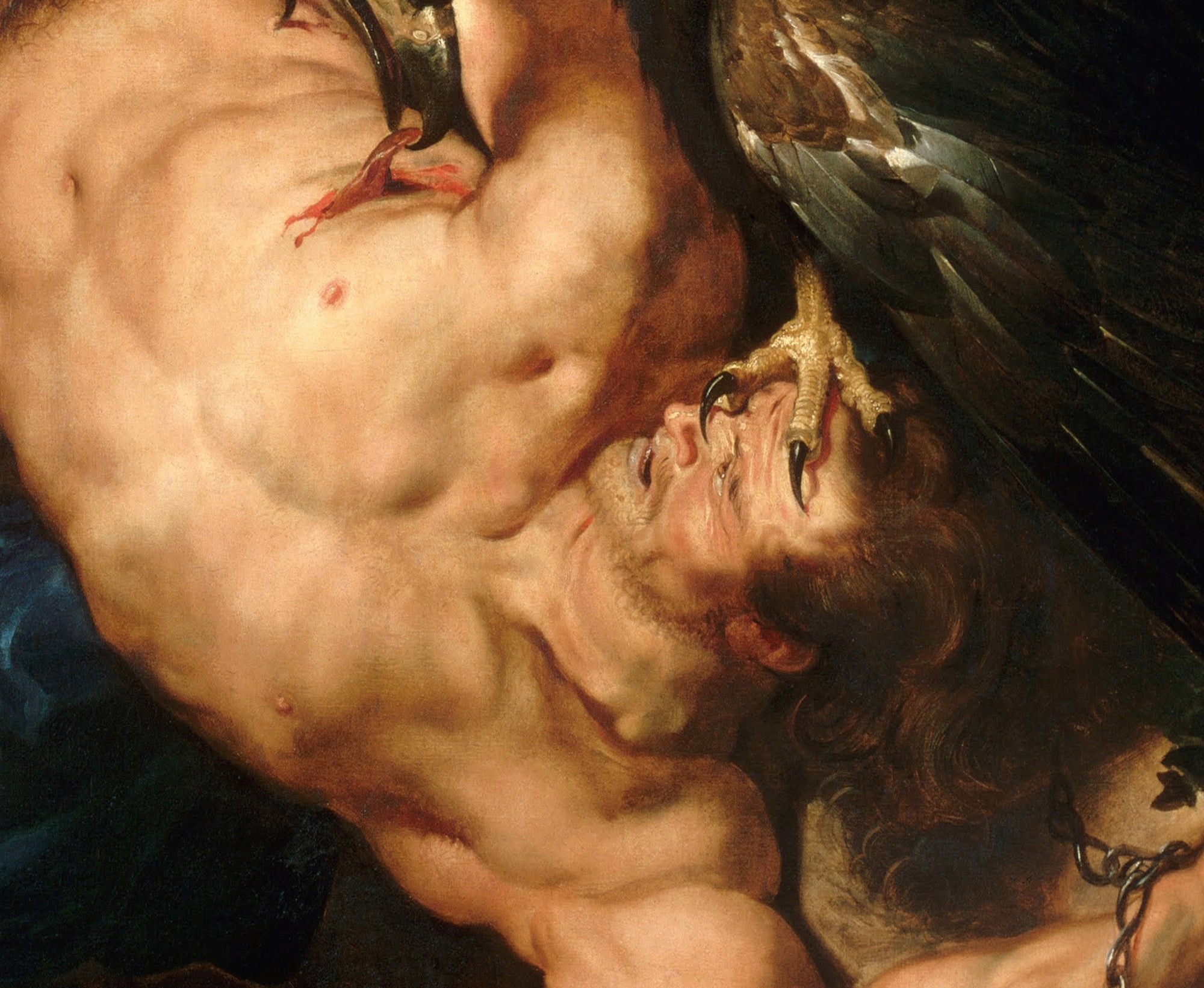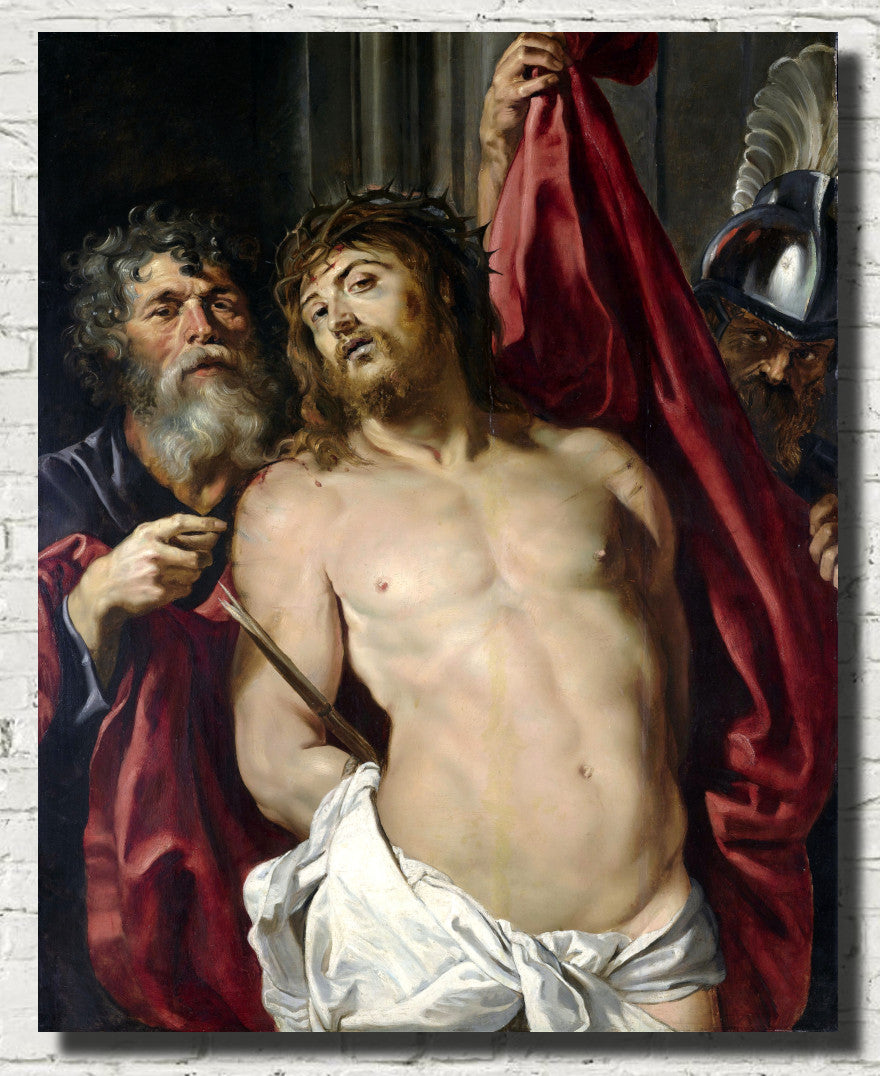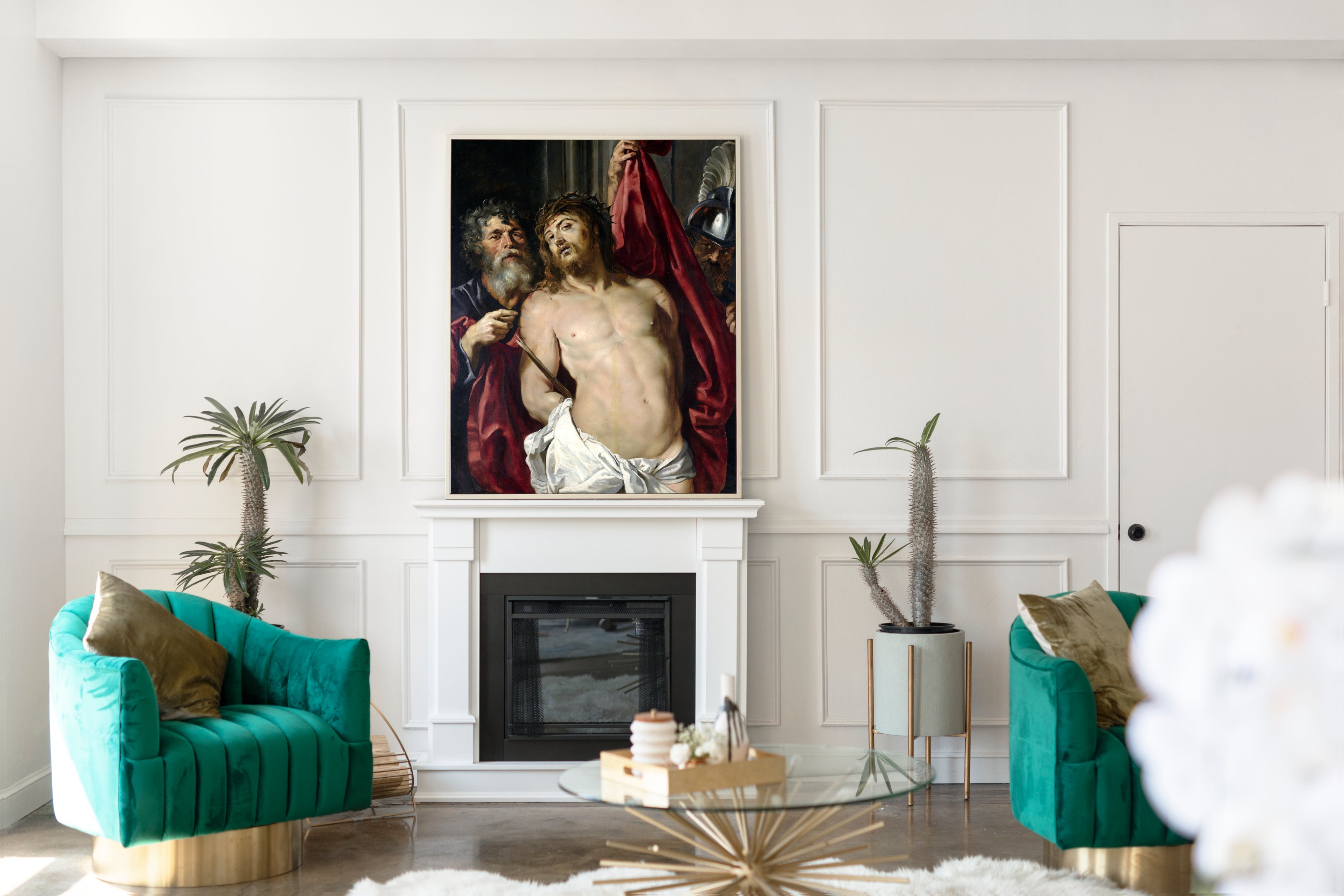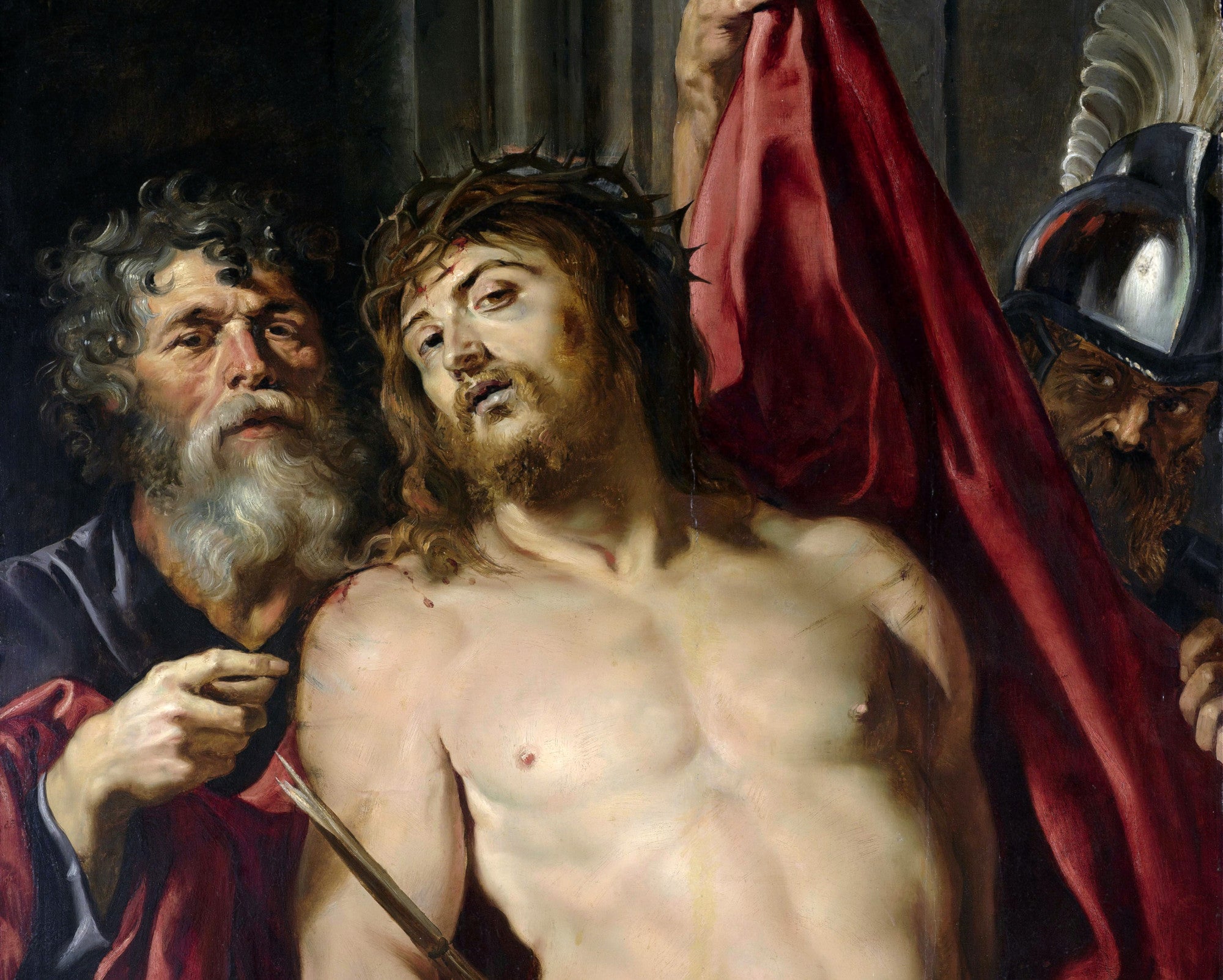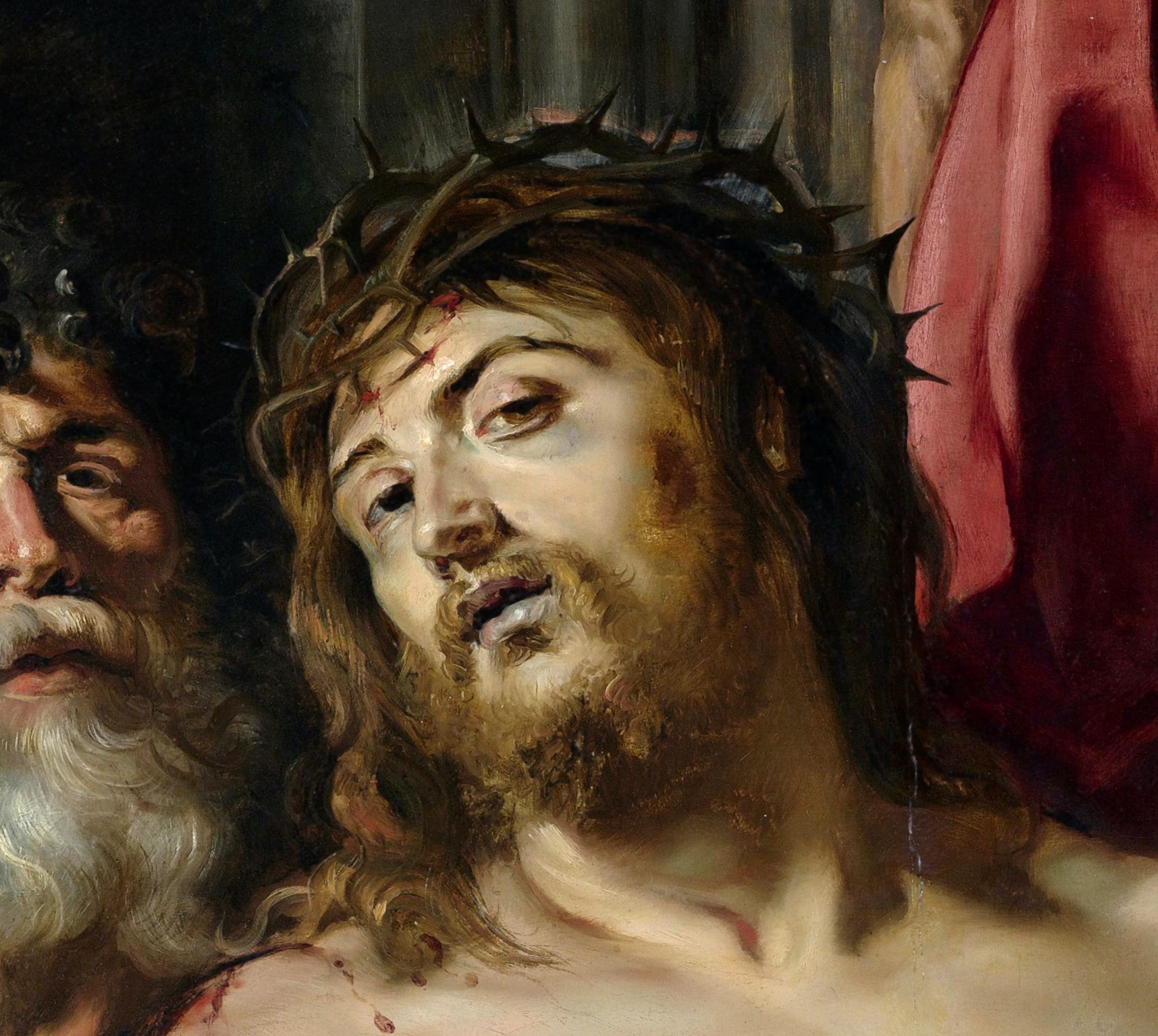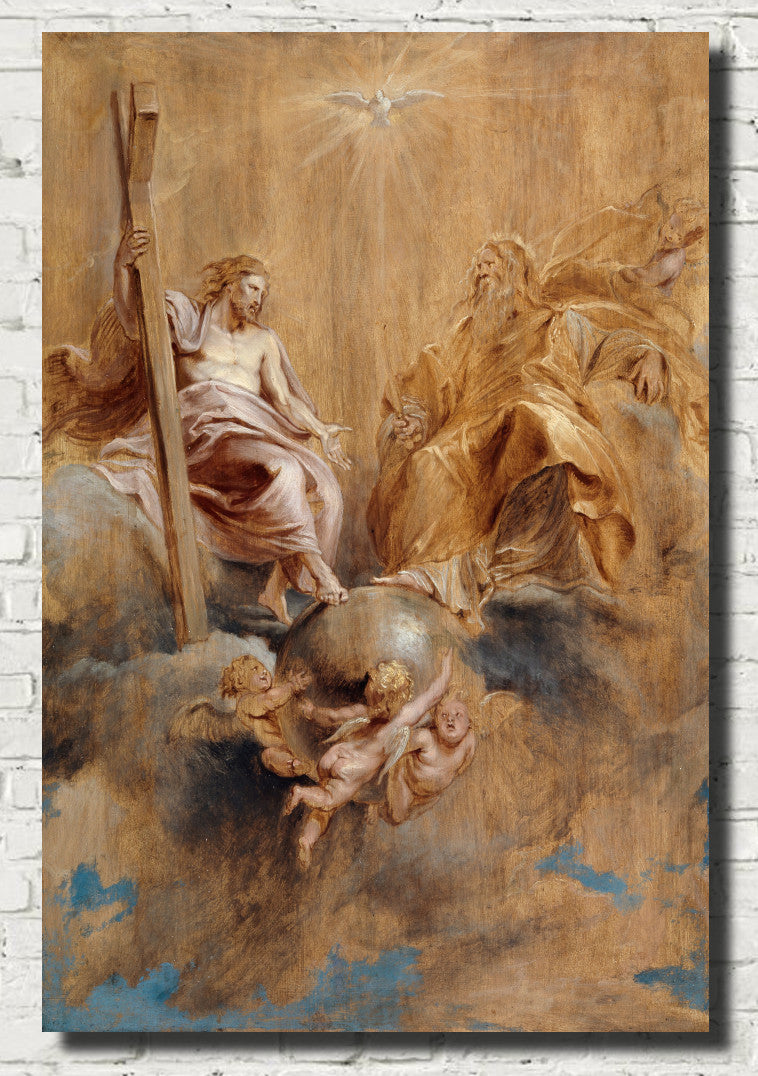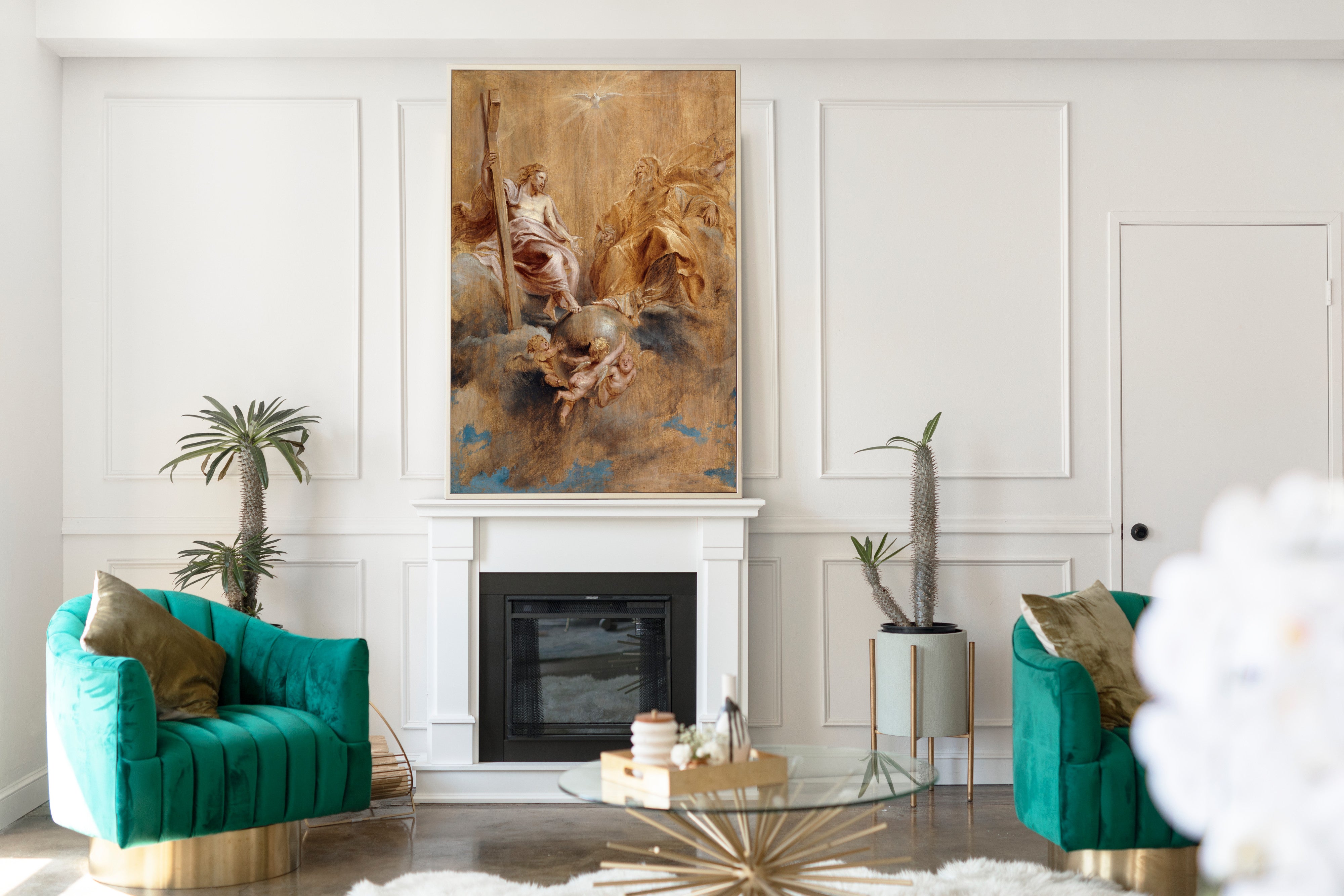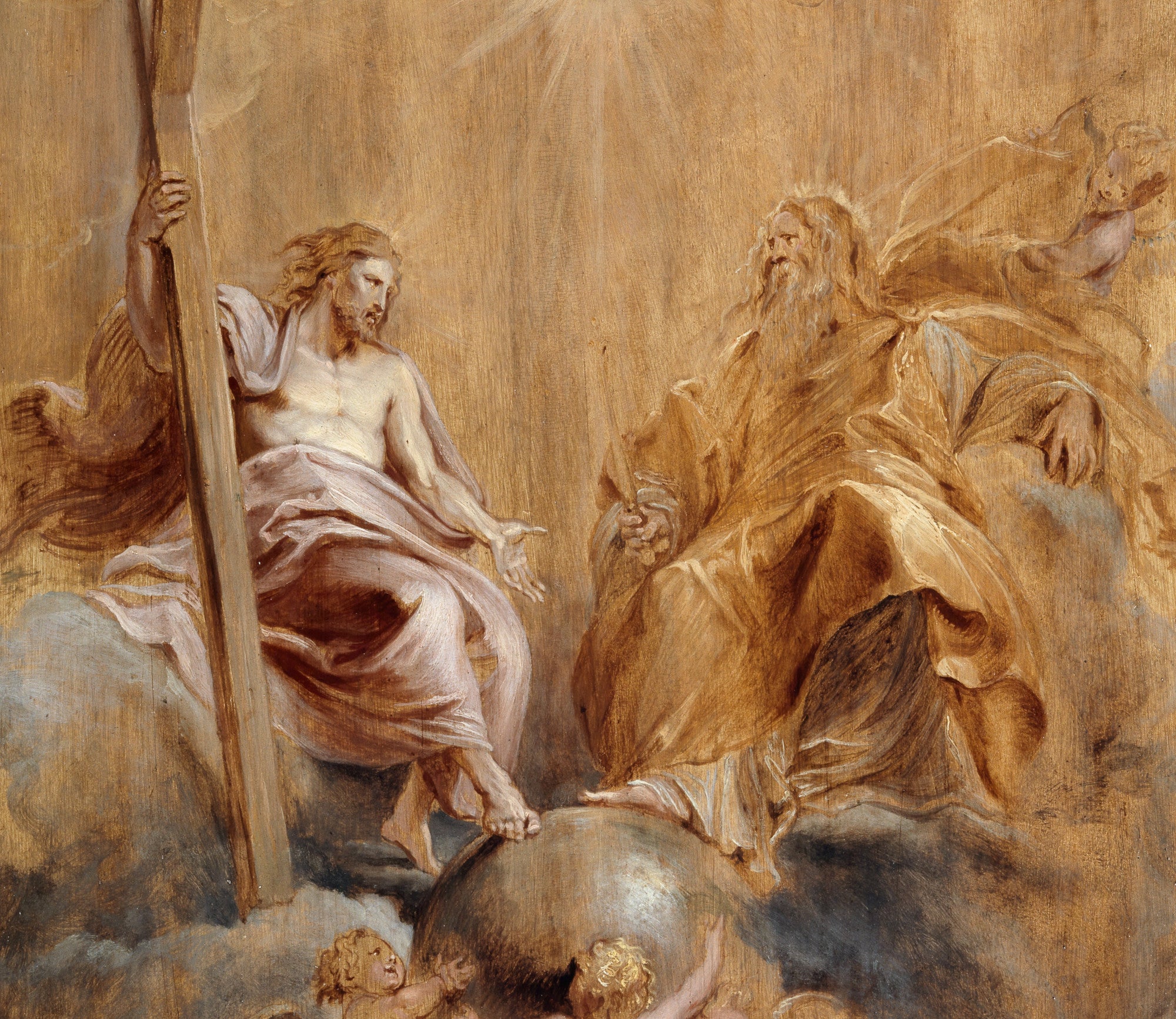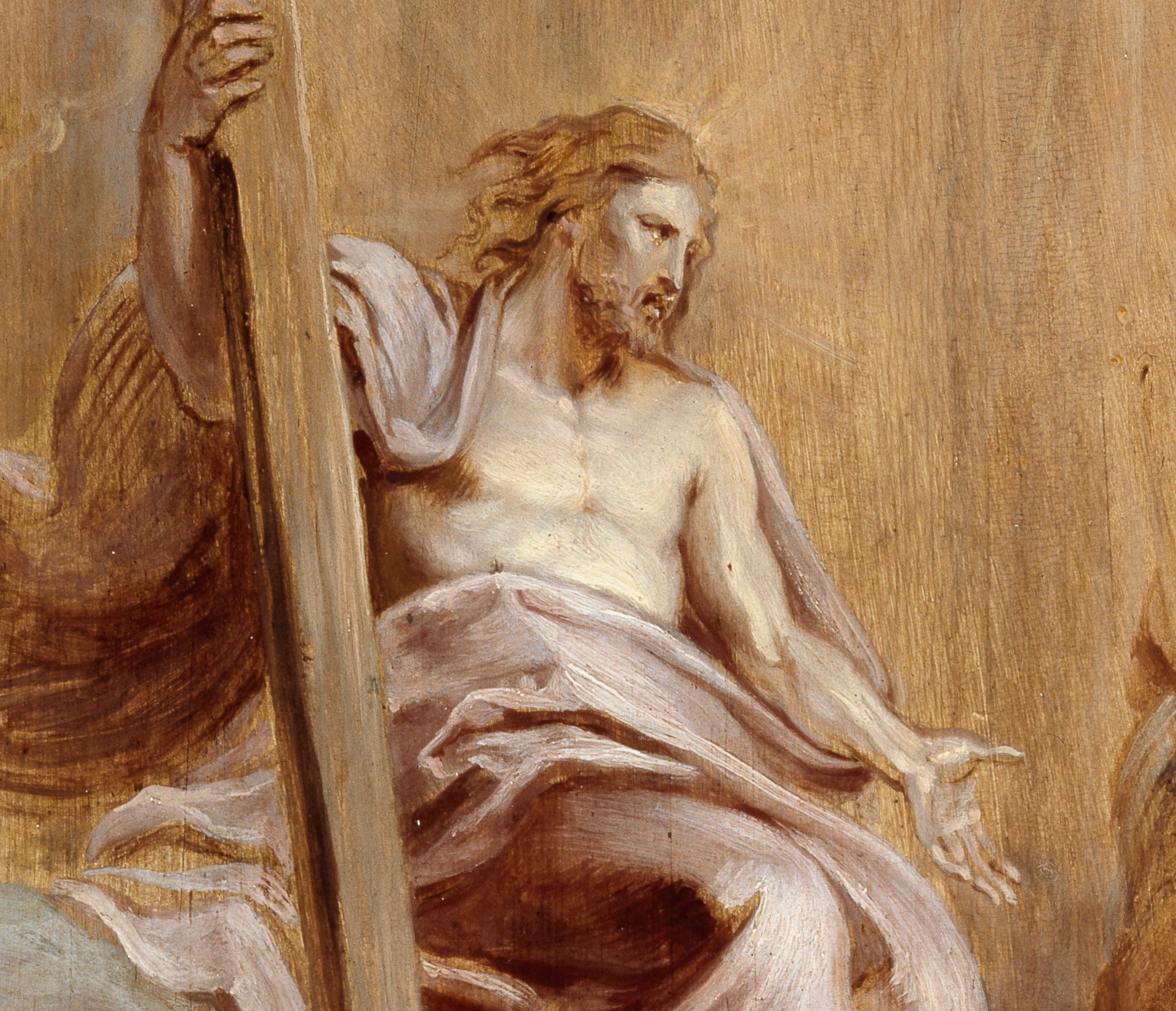The Four Continents, Peter Paul Rubens
Couldn't load pickup availability
BUY WITH CONFIDENCE
The painting "The Four Continents" by Peter Paul Rubens portrays female personifications of Europe, Asia, Africa, and America, accompanied by male personifications of their respective major rivers. The central figure representing Africa is significant as one of the two black women painted by Rubens at the time. The painting underwent restoration in 2015, revealing additional canvas pieces, suggesting its original size.
Summary
-
Painting Description:
- Created by Flemish artist Peter Paul Rubens between 1612 and 1615.
- Depicts female personifications of Europe, Asia, Africa, and America with male personifications of major rivers (Danube, Ganges, Nile, Río de la Plata).
- Features three putti, a crocodile, a tigress, and her cubs.
-
Historical Context:
- Painted during the Twelve Years' Truce, reflecting Rubens' hope for peace in Antwerp after the Eighty Years' War.
- Rubens, an artist and diplomat, expressed his interest in peace through diplomatic work during the 1620s.
-
Iconography:
- Set in a marshland with mountains and water in the background.
- Europe, Asia, Africa, and America seated with varying heights, possibly symbolizing their perceived importance.
- Symbolic elements like the tigress representing Asia, and the personifications holding attributes related to their rivers.
-
The Black Female Nude:
- The central figure personifying Africa is one of the two black women Rubens painted.
- Reflects Rubens' preference for depicting full-bodied women.
- Influence from seventeenth-century discussions about the Nile's portrayal as black due to its connection with Ethiopia.
-
Interpretations:
- Scholars Elizabeth McGrath and Jean Michel Massing propose different interpretations, with McGrath suggesting water nymphs instead of continents.
- Possible representations include the spread of Catholicism or symbolizing global trade.
-
Restoration:
- Restoration process in 2015 involved taking the painting out of its frame, cleaning, and re-touching.
- Additional canvas pieces on the right side hinted at the painting's original smaller size.
This painting, rich in symbolism and historical context, serves as a nuanced representation of continents during a period of diplomatic truce, with the restoration process unveiling insights into its creation and alterations over time.
The Birth of the Milky Way is a significant oil-on-canvas masterpiece by Flemish artist Peter Paul Rubens, crafted between 1636 and 1638. Illustrating the Greco-Roman myth of the Milky Way's origin, the painting portrays Hera (Juno) spilling breast milk, alongside the infant Heracles (Hercules) and Zeus (Jupiter) with distinctive symbols. Notably, Rubens modeled Hera's face on his wife, Hélène Fourment. The peacock-drawn carriage in the dark night sky enhances the figures' volume, emphasizing artistic depth.
Commissioned by Philip IV of Spain, the artwork, measuring 244 cm × 181 cm, was part of the decoration for Torre de la Parada. Rubens, known for his Greco-Roman mythological works, also painted pieces like Hercules Fighting the Nemean Lion. Currently housed at the Museo del Prado in Madrid, the painting's significance is underscored by its historical context and rich symbolism.
References, including Museo del Prado and Larry Silver's work on Rubens, authenticate the historical and artistic aspects. Beyond the artwork, the page delves into related themes, such as Tintoretto's The Origin of the Milky Way, peacock symbolism, and diverse categorizations like 17th-century painting and breastfeeding in art. Overall, the Wikipedia page provides a comprehensive exploration of The Birth of the Milky Way, blending artistic appreciation with historical context and thematic connections.
The Birth of the Milky Way is a significant oil-on-canvas masterpiece by Flemish artist Peter Paul Rubens, crafted between 1636 and 1638. Illustrating the Greco-Roman myth of the Milky Way's origin, the painting portrays Hera (Juno) spilling breast milk, alongside the infant Heracles (Hercules) and Zeus (Jupiter) with distinctive symbols. Notably, Rubens modeled Hera's face on his wife, Hélène Fourment. The peacock-drawn carriage in the dark night sky enhances the figures' volume, emphasizing artistic depth.
Commissioned by Philip IV of Spain, the artwork, measuring 244 cm × 181 cm, was part of the decoration for Torre de la Parada. Rubens, known for his Greco-Roman mythological works, also painted pieces like Hercules Fighting the Nemean Lion. Currently housed at the Museo del Prado in Madrid, the painting's significance is underscored by its historical context and rich symbolism.
References, including Museo del Prado and Larry Silver's work on Rubens, authenticate the historical and artistic aspects. Beyond the artwork, the page delves into related themes, such as Tintoretto's The Origin of the Milky Way, peacock symbolism, and diverse categorizations like 17th-century painting and breastfeeding in art. Overall, the Wikipedia page provides a comprehensive exploration of The Birth of the Milky Way, blending artistic appreciation with historical context and thematic connections.
The Birth of the Milky Way is a significant oil-on-canvas masterpiece by Flemish artist Peter Paul Rubens, crafted between 1636 and 1638. Illustrating the Greco-Roman myth of the Milky Way's origin, the painting portrays Hera (Juno) spilling breast milk, alongside the infant Heracles (Hercules) and Zeus (Jupiter) with distinctive symbols. Notably, Rubens modeled Hera's face on his wife, Hélène Fourment. The peacock-drawn carriage in the dark night sky enhances the figures' volume, emphasizing artistic depth.
Commissioned by Philip IV of Spain, the artwork, measuring 244 cm × 181 cm, was part of the decoration for Torre de la Parada. Rubens, known for his Greco-Roman mythological works, also painted pieces like Hercules Fighting the Nemean Lion. Currently housed at the Museo del Prado in Madrid, the painting's significance is underscored by its historical context and rich symbolism.
References, including Museo del Prado and Larry Silver's work on Rubens, authenticate the historical and artistic aspects. Beyond the artwork, the page delves into related themes, such as Tintoretto's The Origin of the Milky Way, peacock symbolism, and diverse categorizations like 17th-century painting and breastfeeding in art. Overall, the Wikipedia page provides a comprehensive exploration of The Birth of the Milky Way, blending artistic appreciation with historical context and thematic connections.


All prints are made using archival art stocks and UV pigment inks to give up to 200 years life. Prints are sold unframed and unmounted.
All orders for unframed fine art prints and original paintings are dispatched within 2 working days of receipt of payment.
Orders for custom framed prints are dispatched within 4 working days.
All orders are fully tracked from dispatch to delivery at your home or business.
All print and original painting orders are fully insured against loss or damage in transit. We refund or replace any damaged or lost orders.
Buy with confidence - read what our satisfied customers have to say - Reviews
Fine art papers are printed without any additional white border Please let us know at the time of ordering if you would like a small additional white border.
Rolled canvas options have an additional white border of approximately 2.5 inches (7cm) on all 4 sides to aid stretching.
Ready to hang canvas panels are stretched on 1.5 inch deep solid pine frames from sustainable forestry sources. The image is mirrored on all 4 sides to give an aesthetically pleasing finish.
Why not have us gift wrap your order and attach a personalised message to the recipient. Available for all orders. Each order is hand wrapped in high quality gift wrap with meatllic ribbon and bow. Your personalised message is printed on a card which is included with your order.
Have your hand wrapped gift delivered directly to the recipient.
Full tracking and insurance included with every order.
Please note design may vary depending upon availability
Just purchase the gift wrap option HERE
We have a wide range of frames in standard sizes and we also make custom size frames.
To order a framed print:
1. select the print size you would like along with the print materials (matte paper, fine art paper).
2. Add your print choice to the basket.
3. Choose from our range of frames
4. Select the same size as the print you have added to your basket. If the frame size you want is not listed please contact us
5. Choose from the mount or no-mount option
6. Add your frame choice to the basket
7. Proceed to checkout.
Why Choose GalleryThane?
- Printed and framed in-house
- Free UK delivery
- Free EU and USA delivery on orders over £200
- Tracking and insurance included in every order
- Fast 1-3 day dispatch
- Gift wrapping service available
- Gallery quality materials
- Sustainable, eco-friendly packaging
- Great customer support
What makes our Prints and Canvas Panels so special

Latest Giclee Printing Technology
We have invested in the latest wide format print technology to produce museum quality giclee prints utilising the highest quality pigment inks to give outstanding colour reproduction.

Museum Quality Archival Fine Art Papers
We print on the finest quality fine art papers with textured, smooth and lustre finishes for prints which last a lifetime.
From aceo miniatures to 40x80 inch large format, every print has our lifetime quality guaranteee.

Solid Wood Frames, Cotton Canvas
All of the wood for our canvas panels and frames is responsibly sourced from manages forests. Our cotton canvas is completely seedless for the highest quality reproduction possible.

